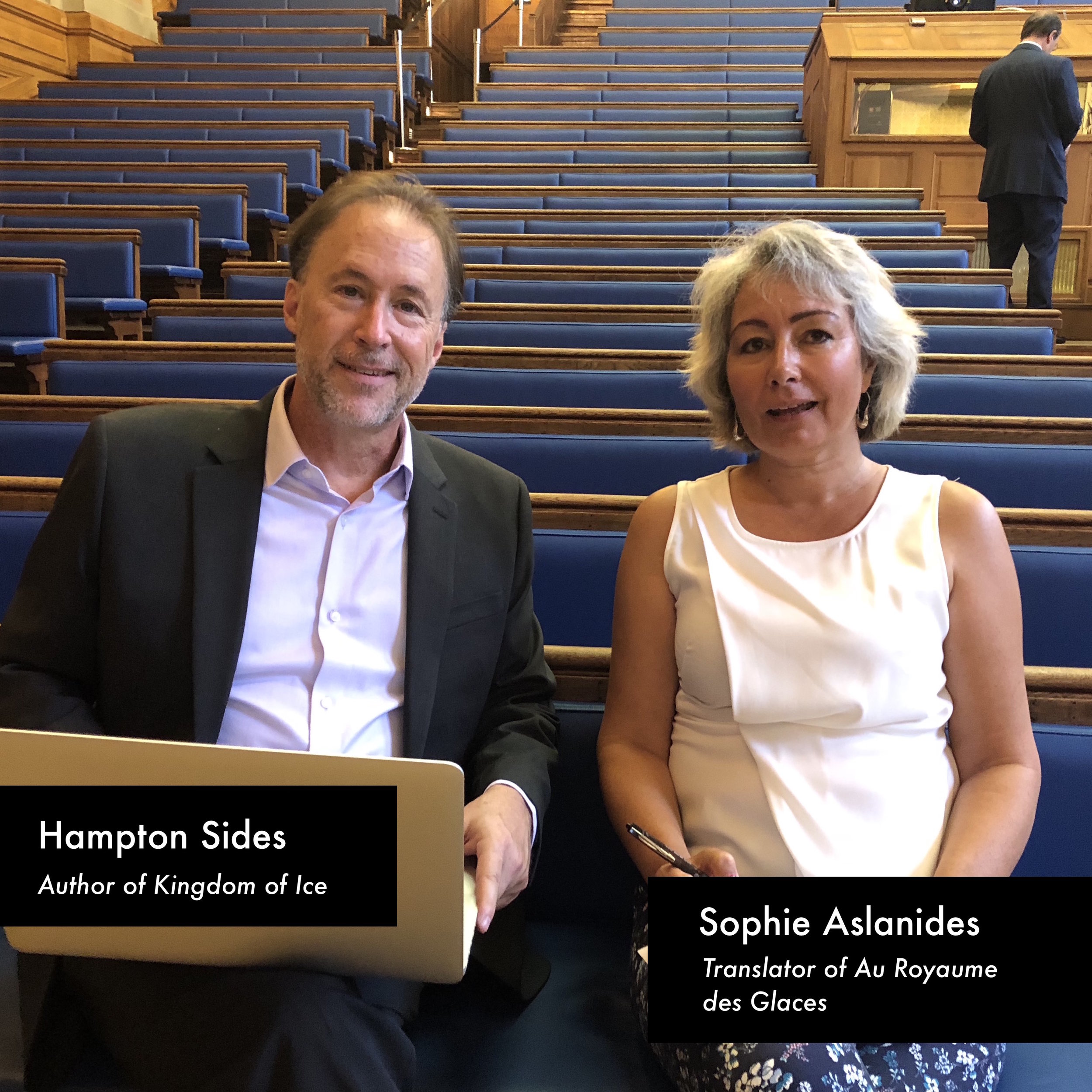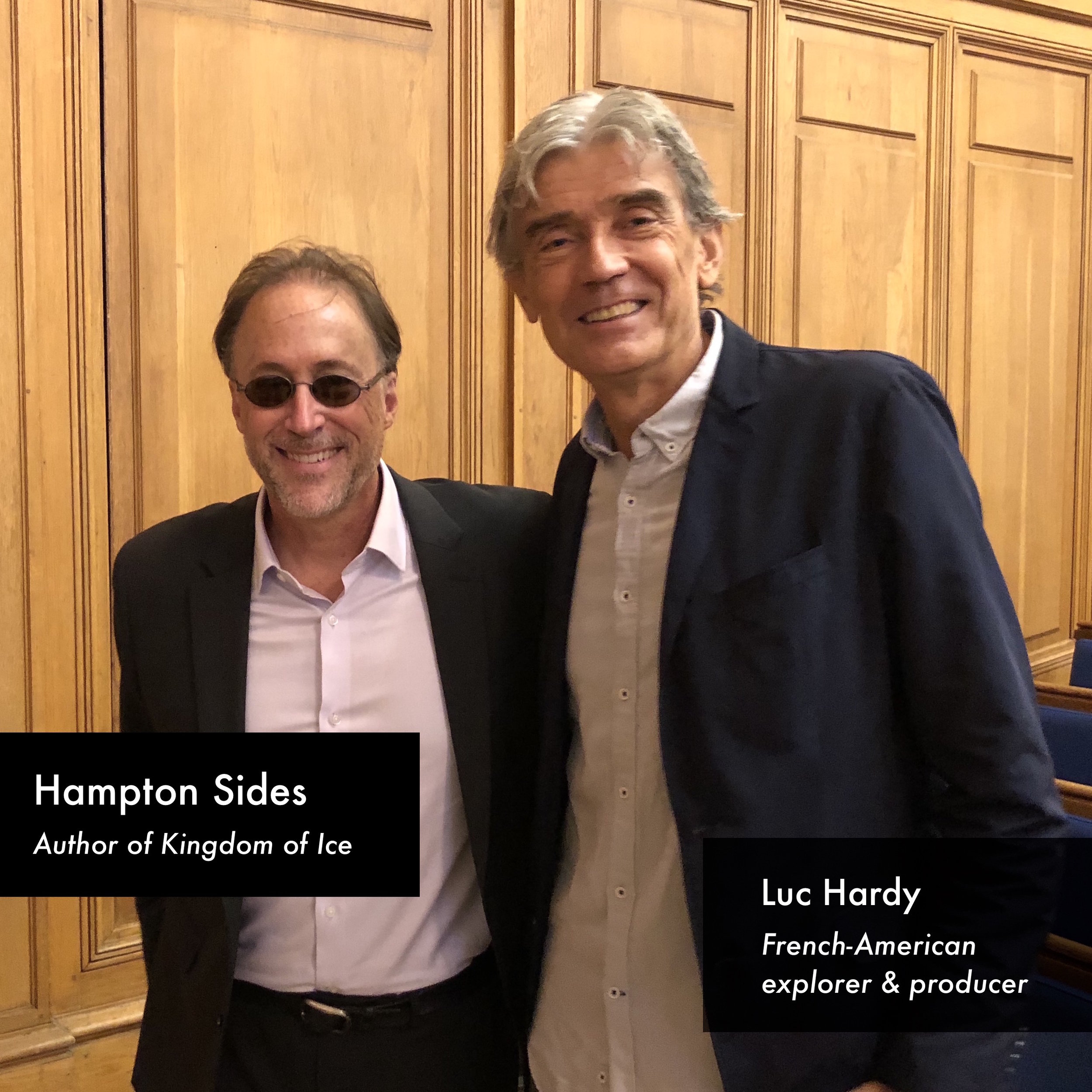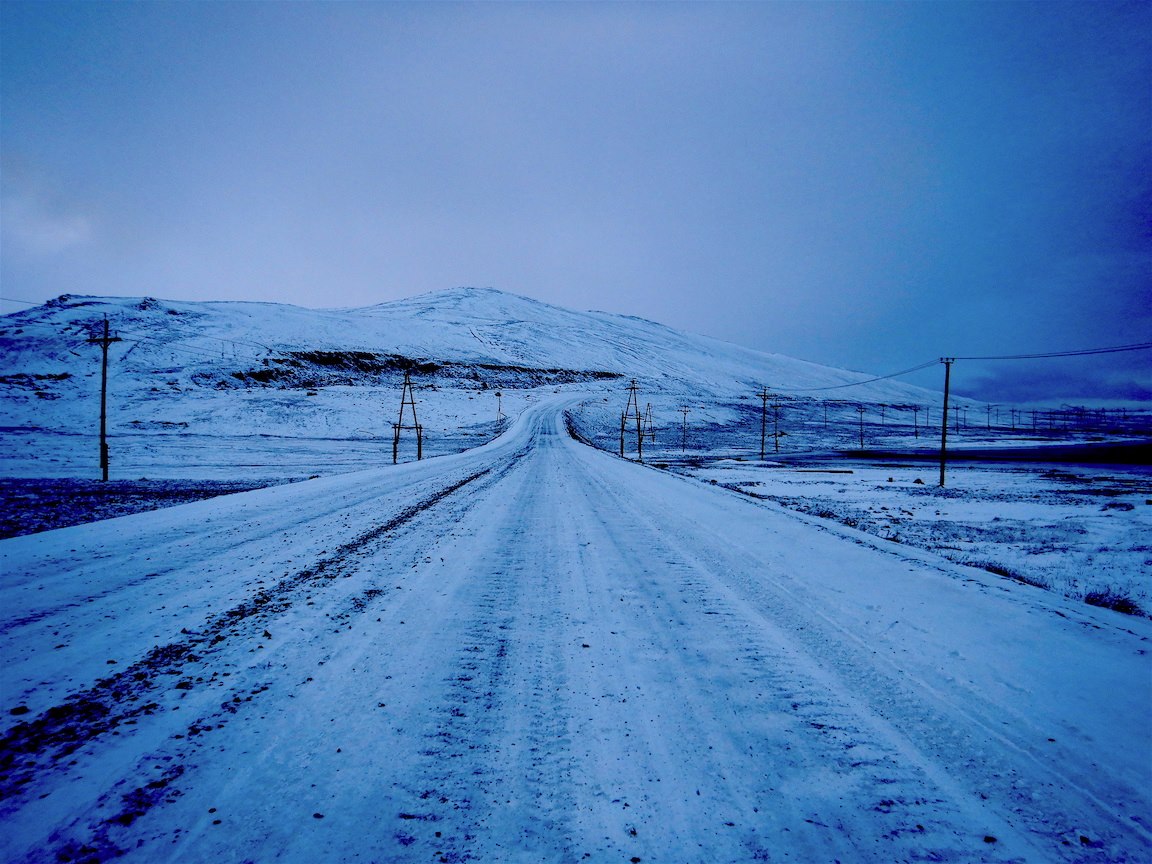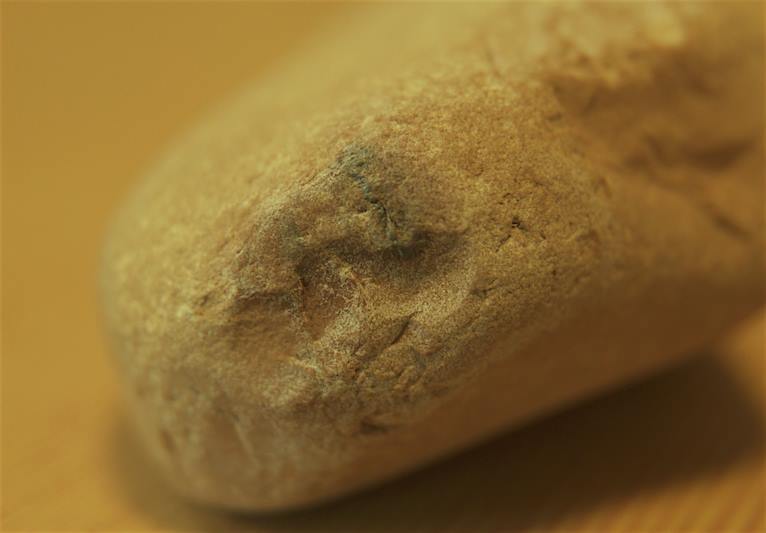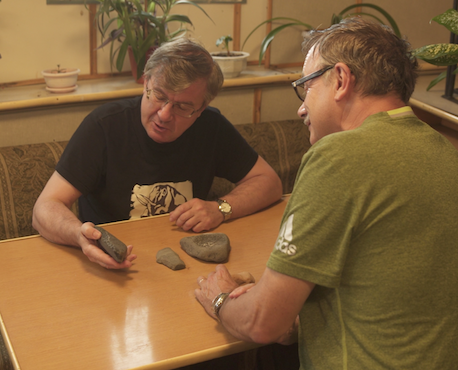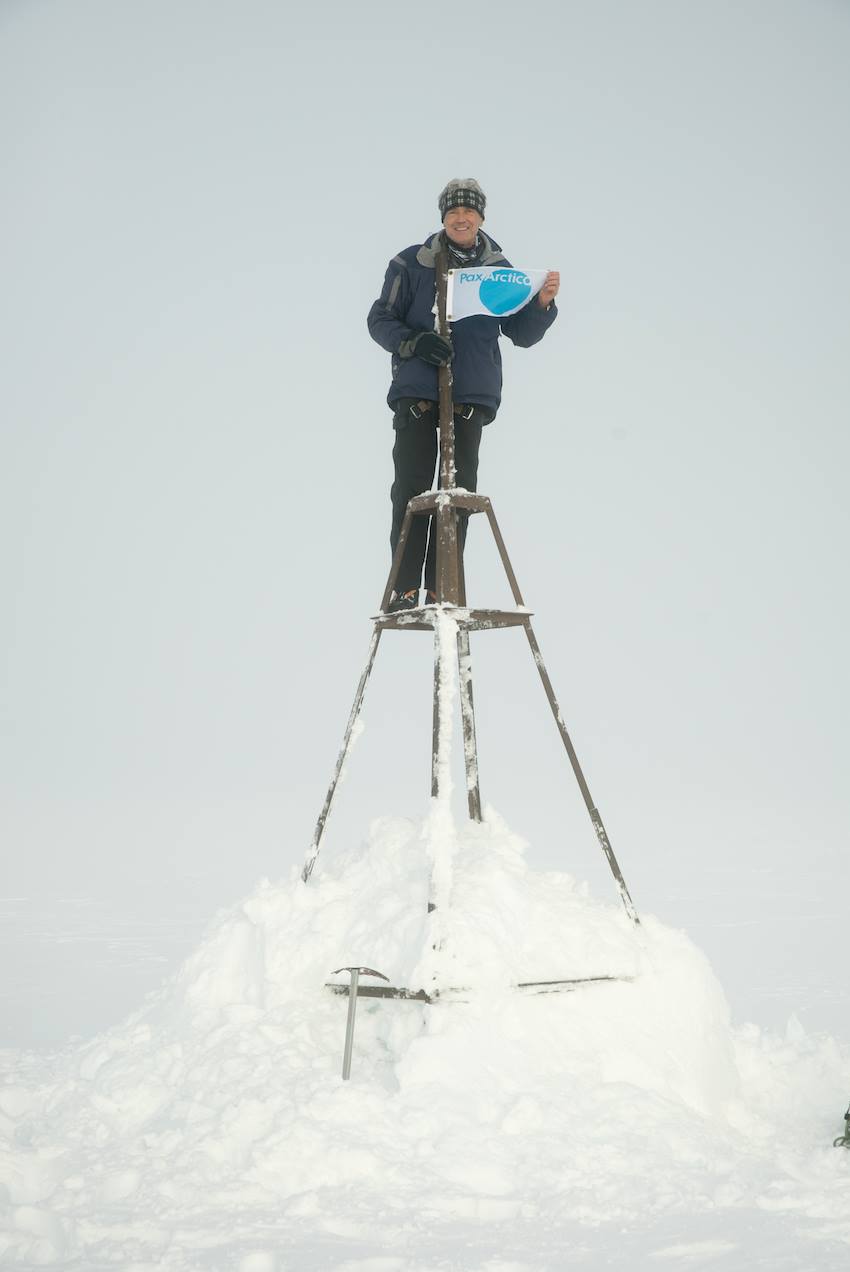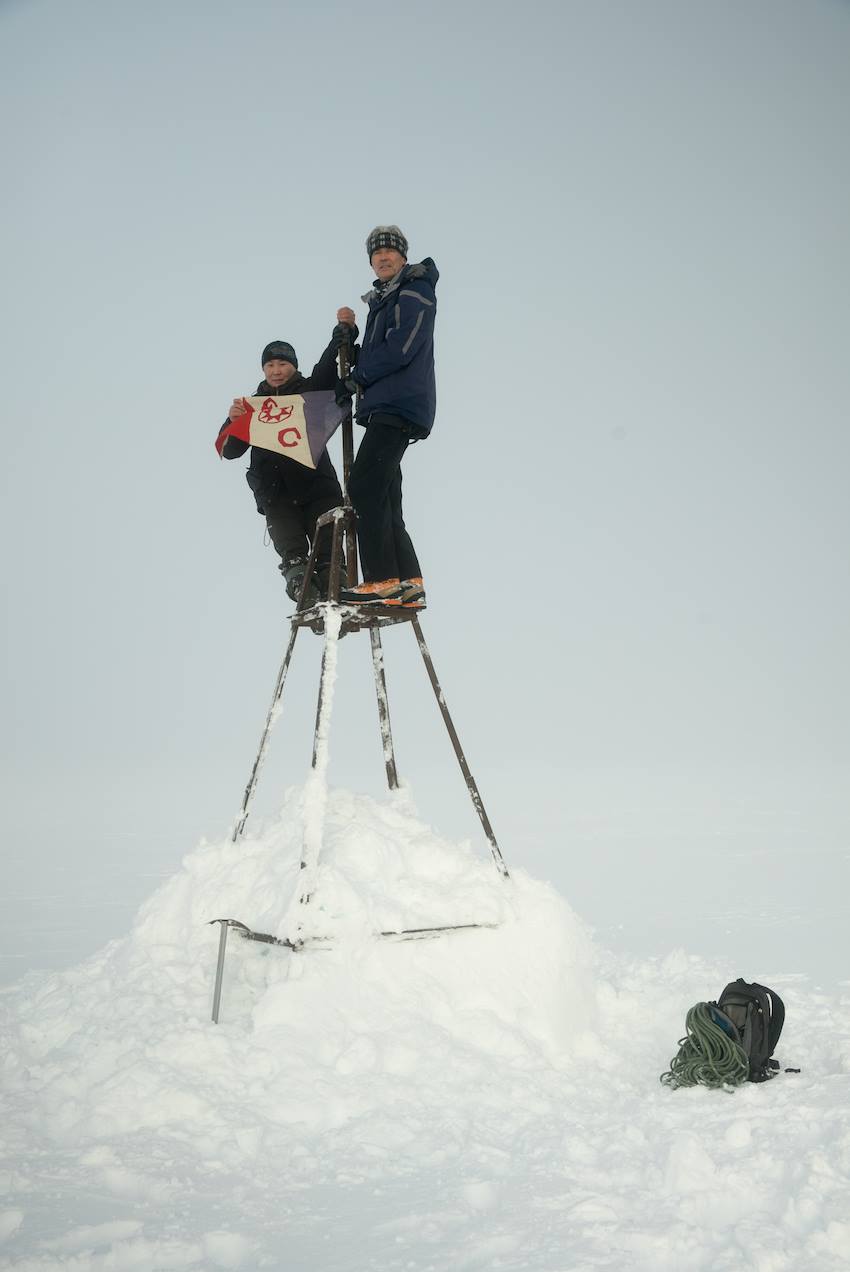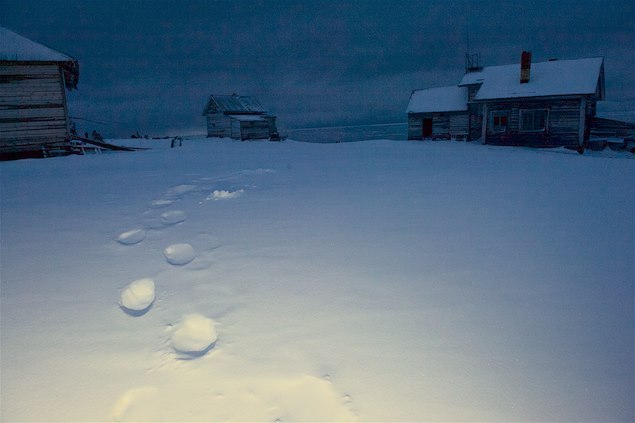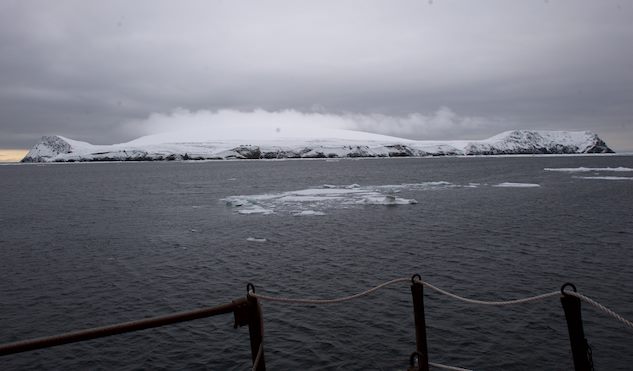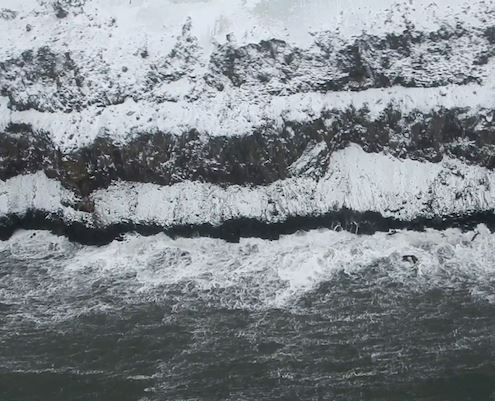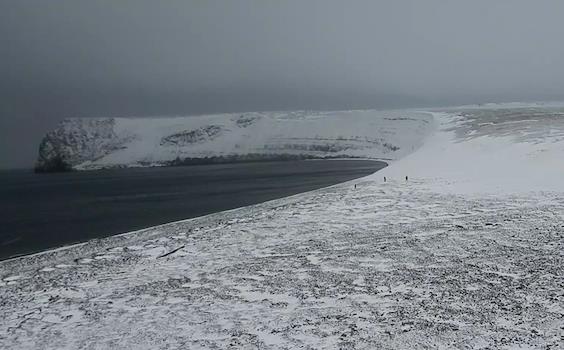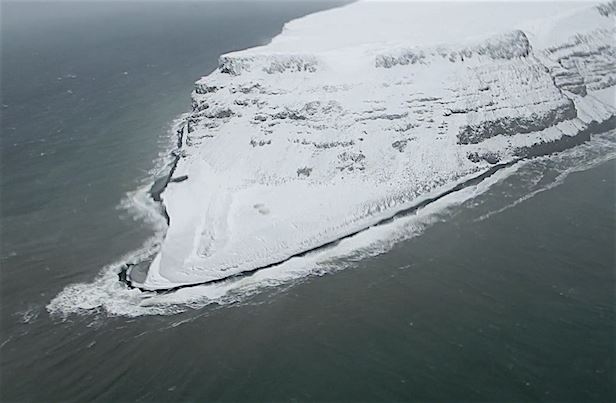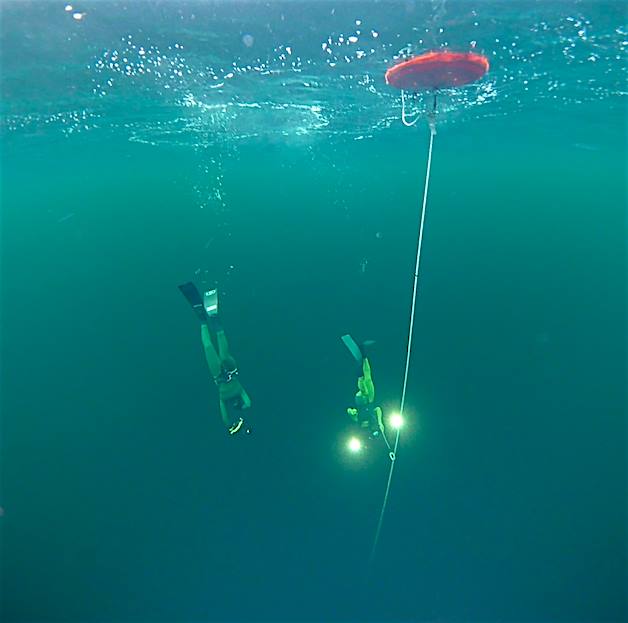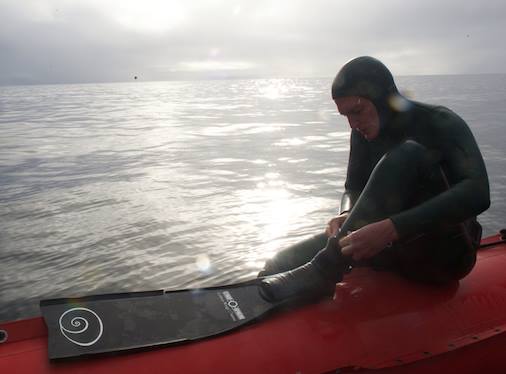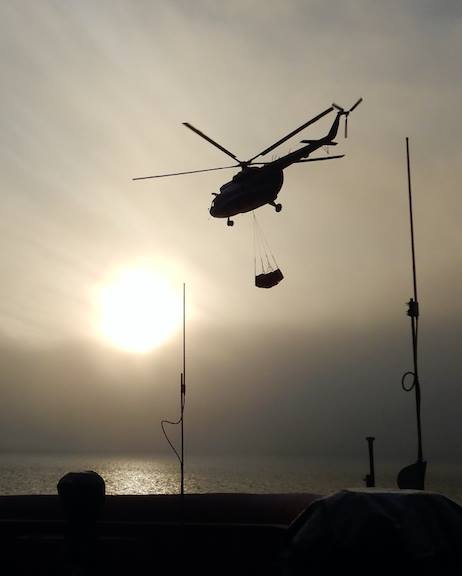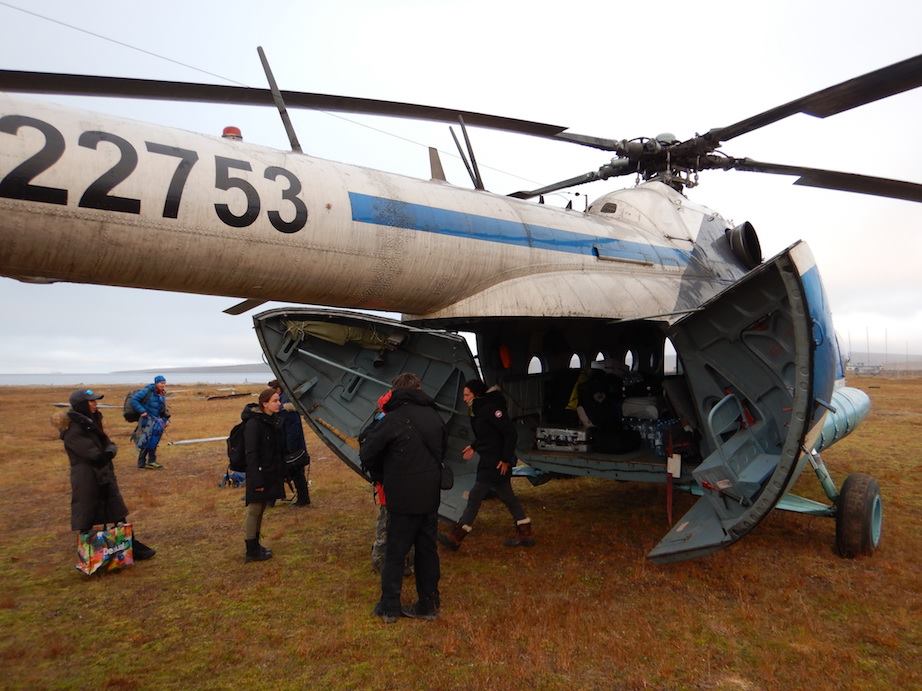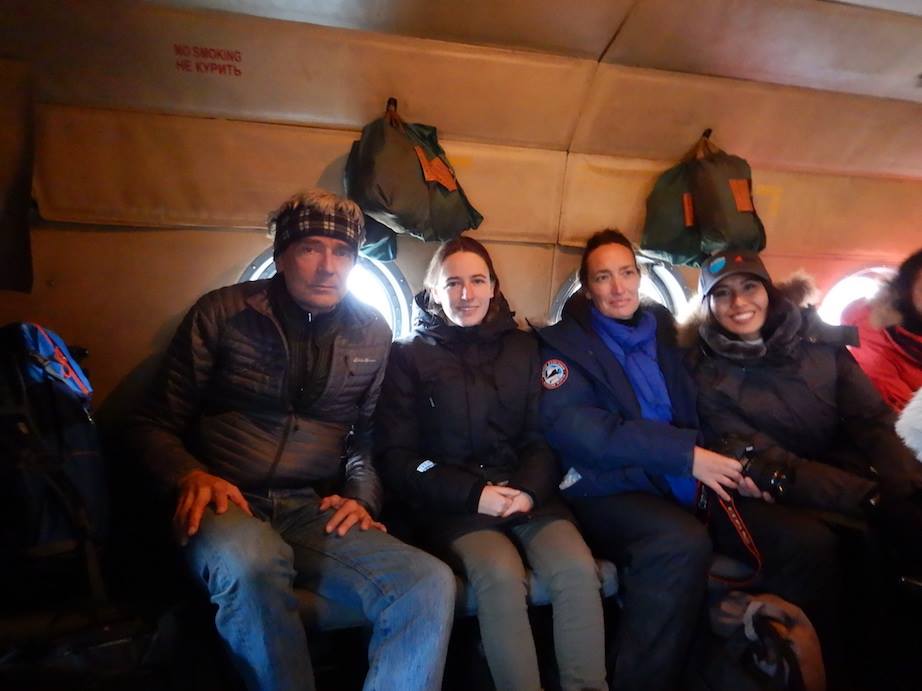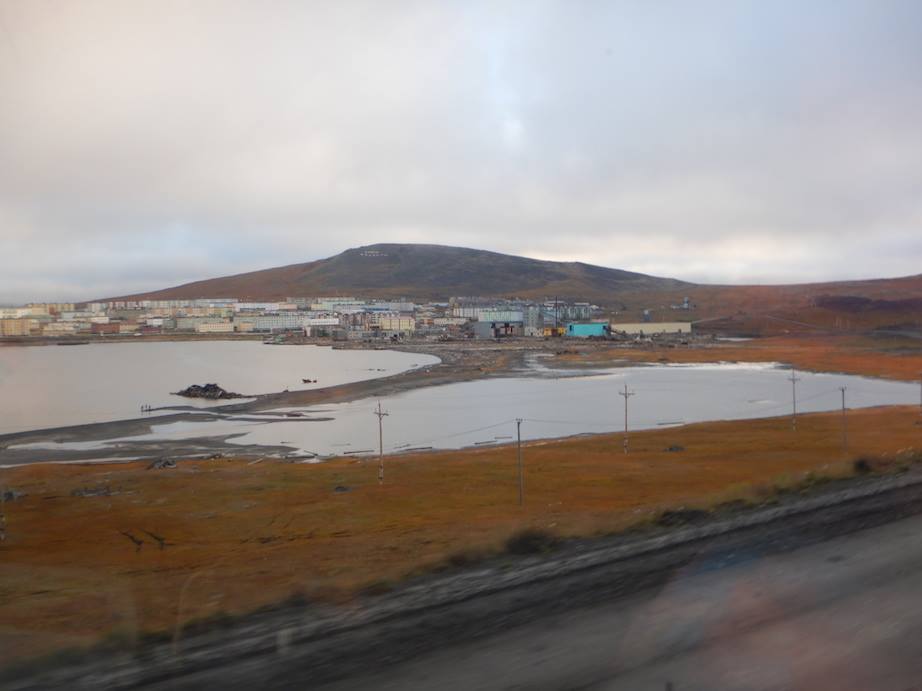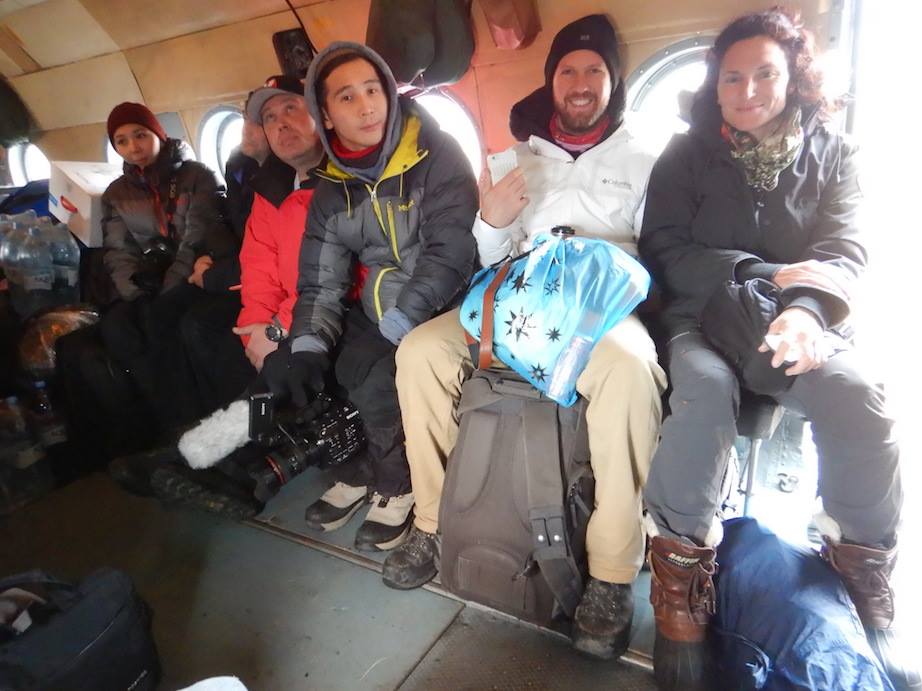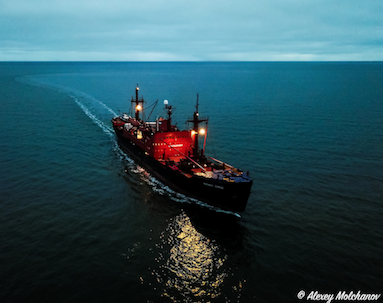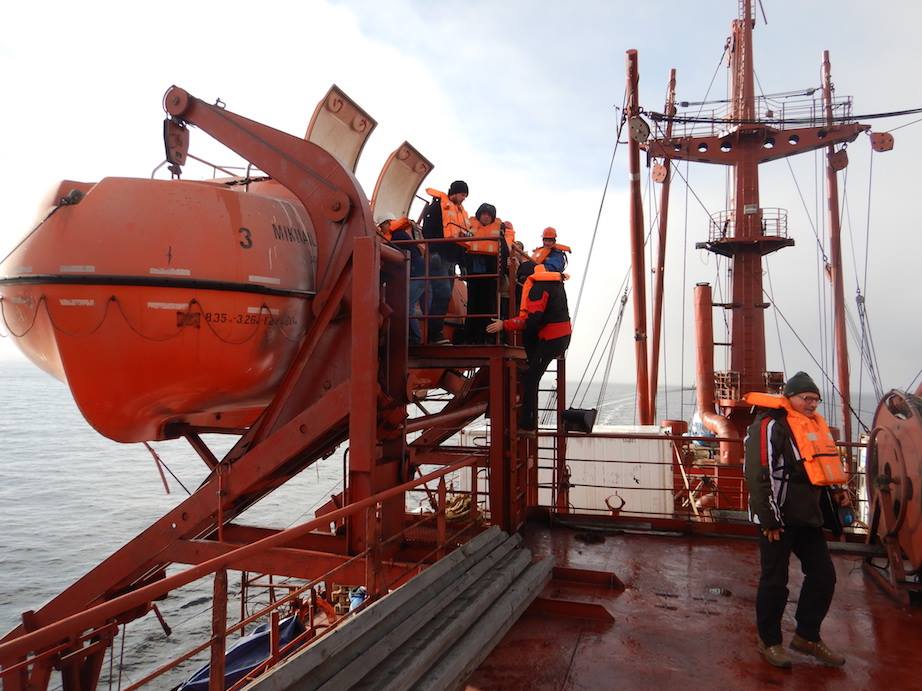MER DE GLACE
NEW YOUTUBE VIDEO RELEASED
Chamonix Mont Blanc: Mer de Glace glacier’s thickness shrinks 115m in 35 years (between 1985 & 2020)
Luc Hardy here, from Pax Arctica, in Chamonix-Mont Blanc, on the front of the Mer de Glace, one of the most famous glaciers in the Alps. In 1985 a gondola was built to access the glacier. Unfortunately, like many others, this glacier is shrinking. Each year, steps must be added to walk down to it. Here we are at the level of the glacier when I was skiing down the Vallée Blanche before the installation of the gondola. A few more years and there will be no ice left in this part of the valley.
[French] Ici Luc Hardy, de Pax Arctica, à Chamonix-Mont Blanc, sur le front de la Mer de Glace, l'un des glaciers les plus célèbres des Alpes En 1985, un télécabine a été construit pour accéder au glacier. Malheureusement, comme beaucoup d'autres, ce glacier diminue. Chaque année, des marches sont ajoutées pour y accéder Nous voici au niveau du glacier lorsque je descendais à ski la Vallée Blanche avant l’installation de ce télécabine Encore quelques années et il n'y aura plus du tout de glace dans cette partie de la vallée.
The Explorers Club World Oceans Week Virtual Art Gallery
This show organized during World Ocean Week is featuring Ocean-related photography from Explorers Club members.
Go visit the entire gallery, an experience oceans of art in the name of conservation, bringing together works from more than 80 Members of The Explorers Club.
Go there to see my contribution!
UNLADYLIKE2020
UnLadyLike2020 is an engaging multimedia project featuring unsung American heroines from the early years of feminism. They are stories of extraordinary courage and persistence that will profoundly change your view of women's history and empowerment.
Starting next Wednesday, March 4, each of the 26 animated documentary shorts will be released every Wednesday on
PBS' American Masters' website and UNLADYLIKE2020's interactive website until August 26, 2020, Women's Equality Day.
FRENCH FOCUS ON CINEMA 2019 – Festival opening speeches
with
Renée KETCHAM – Festival chairman
Jean-Yves FILLION – BNB Paribas USA chairman
Patrice COURTABAN – TV5 Monde USA COO
Joe MEYER – Stamford Advocate Journalist
AUX ETATS-UNIS, CES DÉFENSEURS FRANÇAIS DE L’ENVIRONNEMENT
– French Morning New-York
Le monde entier célèbre la “Journée de la Terre” le 22 avril. Aux Etats-Unis, le sujet de l’environnement reste clivant. Selon un sondage du très sérieux institut Pew publié le 19 avril, même si une part croissante des Américains dit depuis 2008 que la protection de l’environnement devrait être une priorité du président et du Congrès, démocrates et républicains se divisent sur les bienfaits des politiques environnementales pour l’économie: 45% des démocrates disent qu’elles font plus de bien que de mal, contre seulement 11% des républicains. Ils ne sont pas non plus d’accord sur la responsabilité de l’Homme dans ce phénomène.
“Toutes les actions sont louables. Elles dépendent du temps de chacun, de sa personnalité de ses moyens“, juge Luc Hardy, explorateur-documentariste-entrepreneur-photographe français basé dans le Connecticut.
SOUNDS LIKE PORTRAITS - LUC HARDY PODCAST
Unlimited creativity is a podcast about creativity:
Whatever their field, my guests are all creators. While they talk about their creative process, they share an inner portrait of themselves which may resonate.
-Philippe Ungar
NOAA's ARCTIC PROGRAM
NOAA provides science, service, and stewardship to the rapidly changing Arctic region,
its inhabitants, and the Nation.
ARCTIC REPORT 2018
Arctic Report Card: Update for 2018 - Tracking recent environmental changes, with 14 essays prepared by an international team of 81 scientists from 12 different countries and an independent peer-review organized by the Arctic Monitoring and Assessment Programme of the Arctic Council. Visit Website
AU ROYAUME DES GLACES
Translation in French of the Kingdom of Ice
Special event in Paris
Presentation of the book Au Royaume des Glaces and
special screening of Arktika Incognita
Wednesday, September 12th - Maison des océans, PARIS
Prince Albert II - introducing Arktika Incognita & Kingdom of Ice
French Morning vous racontait en 2014 les aventures de Luc Hardy dans les îles Sandwich du Sud, au large de l’Antarctique. Ce Français qui vit dans le Connecticut avait monté une expédition scientifique en voilier autour de ces îles, dont un film était sorti au printemps 2015.
Trois ans plus tard, Luc Hardy revient avec un nouveau documentaire, Arktika Incognita, projeté en avant-première au FIAF mardi 1er mai à 4pm, dans le cadre du festival Focus on French Cinema.
En 1879, à bord de l’USS Jeannette, le capitaine américain George De Long et son équipage ambitionnent de rejoindre le Pôle Nord. Ils découvrent alors cinq îles -les îles de Nouvelle-Sibérie- mais n’atteindront jamais leur objectif, échouant leur navire dans les environs. “En lisant cette histoire, je me suis dit que j’aimerais partir sur les traces de George De Long un jour. Encore aujourd’hui, les îles de Nouvelle-Sibérie font figure de terra incognita, diamants blancs sertis sur l’océan et sanctuaires de la faune sauvage”, raconte Luc Hardy.
Deux ans de préparation ont été nécessaires pour mettre au point cette expédition de 15 jours en mer. “Nous sommes partis à la fin d’été 2017 pour avoir le moins de glace possible sur place. Les températures oscillaient quand même entre -20 et -10 degrés. Ce fut éprouvant physiquement même si ce n’étaient pas des conditions extrêmes”, explique le Français de 62 ans.
Pour ce voyage “éco-scientifique” au bout du monde, Luc Hardy s’est entouré d’une équipe de scientifiques “pour collecter du data sur la fonte du permafrost“. Une géo-informaticienne a également aidé à cartographier les îles, et des apnéistes ont plongé sur les lieux du naufrage de l’USS Jeanette. “Notre but n’était pas forcément de retrouver le navire. Nous avons construit cette expédition pour émerveiller et sensibiliser”, confie l’explorateur.
De ce voyage en “terra incognita“, le Français en garde un souvenir impérissable, celui d’avoir été le premier étranger à mettre le pied sur l’île de Jeannette. “C’est un endroit inaccessible dans le vrai sens du terme: brumeux, très rocailleux, presque mystique. Et y voir des ours polaires est toujours impressionnant”.
Réalisé par deux Français, Bertrand Delapierre et Alain Zenou, le documentaire Arktika Incognita témoigne de ce monde méconnu et de l’aventure humaine de son équipage, qui à la manière des explorateurs du XIXème siècle, sont partis en quête d’un horizon inconnu. “L’ironie de l’histoire, c’est que George De Long pensait que les eaux du Pôle Nord étaient chaudes. 140 ans plus tard, le réchauffement climatique est en train de lui donner raison tout doucement“, constate Luc Hardy.
Source: https://frenchmorning.com/documentaire-arktika-incognita/
FOCUS ON FRENCH CINEMA
team on Tony Savino, Pamela Kuhn, Darby & Friends on WGCH
APRIL 16-20, 2018
Presenting the festival’s line up, including ARKTIKA INCOGNITA to be shown on Sunday April 29 at 5:00 pm at Bow Tie theater - Greenwich, CT.
To purchase tickets for all films: http://focusonfrenchcinema.com/tickets-direction/
Luc Hardy also co-producer of TOUT NOUS SEPARE (Saturday, April 28, 2018 - https://sorteer.com/event/focus-on-french-cinema-2018)
Coming soon: FOCUS ON FRENCH CINEMA 2018
Scene … Focus on French Cinema, an annual festival from Alliance Francaise of Greenwich, will be held from April 27 through May 1 in Connecticut and Manhattan, featuring over 20 films. It will include César Award winners and nominees, world and U.S premieres, and short films as well as honor extraordinary women in cinema who work as actors, directors and producers. One of the highlights will be the world premiere of “Arktika Incognita” from Greenwich filmmaker, explorer and author Luc Hardy. His earlier documentary — “The Pursuit of Endurance — On The Shoulders of Shackleton” — had its U.S. premiere at FFC in 2015. Hardy is also co-producer of Thierry Klifa’s “Tout Nous Separe,” starring Catherine Deneuve and Diane Kruger, which will screen at FFC this year for its U.S. premiere. For more info on the festival and all of its films and events, visit www.focusonfrenchcinema.com or call Alliance Francaise at 203-629-1340.
Source (full article): https://m.mysanantonio.com/local/article/The-Dish-Former-Knicks-star-spotted-celebrating-12814441.php
CONFERENCE 934:
Probing the Unknown, Pushing Human Limits
A Discussion with 21st Century Explorers
Do you have an adventurous spirit? Are you thrilled by new discoveries? The next Conference 934 is for you!
On January 11th, 2018 at 6:30 pm, the Consulate will host a conference on the Explorers of the 21st Century. The conference will focus on what it means to be an explorer nowadays. To that aim, three explorers will share their experience and impressions about the most interesting fields of research and the recently explored or unexplored parts of the world.
Luc Hardy, member of the Explorers Club and head of the NGO Pax Arctica Initiative, conducts scientific expeditions and has traveled to the remotest corners of the world to raise public awareness about environmental causes. Cave Diver Natalie L. Gibb, also a member of the Explorers Club, has been an active cave explorer since 2009, and has explored over twenty cave systems in Mexico. Vanessa O’Brien, member of the Explorers Club and of the Scientific Exploration Society, is the first American and British woman to summit K2, the second tallest mountain in the world, in 2017.
Each of them will be pleased to show you videos and pictures of their explorations and discoveries. There will be a Q&A session at the end of the conference: do not hesitate to ask them questions!
The conference is free and open to the public.
Please RSVP to: rsvp.newyorkfslt@diplomatie.gouv.fr
Seats are limited.
PROYECCIÓN “EN BUSCA DE L´ENDURANCIA
- TRAS LAS HUELLAS DE SHACKLETON" DE LUC HARDY
Screening + Q&A at Alliance Française, Buenos Aires, Argentina
Monday, December 4, 2017
7:00pm 9:00pm
Screening + Q&A with Luc Hardy, Co-Director and Co-Producer of "The Pursuit of Endurance"
Película en francés subtitulada en castellano.
Entrada libre y gratuita, por orden de llegada. Las entradas se reparten media hora antes de la función, se entregará una sola entrada por persona.
SINOPSIS
Nueve aventureros están preparando una historia extraordinaria en el corazón del Antárctico. Lo que los une: la pasión por la aventura y la superación personal.
Su objetivo: volver sobre las huellas de uno de las más grandes exploradores polares: Ernest Shackleton.
Hace 100 años, después del naufragio de su barco ¨L´Endurance¨, Ernest Shackleton salvó a su tripulación que estaba a punto de morir. Este nuevo viaje se realizara en velero, esquí y pulka en las islas sub antárticas Elefantes, las islas de Georgia del sur y las islas Sándwich del Sur.
A bordo de l´Australis: un jefe de expedición, un explorador experto, un ex oficial, un skipper, una guía polar, un científico, dos jóvenes soldados y una mujer especialista en snowboard.
Es una ocasión para que recordemos la fragilidad del ecosistema y para estimular los conocimientos acerca de estas zonas remotas. Con ellos, se compartirán los mejores momentos de esta gran aventura, así como también los más difíciles.
BIOGRAFIA - LUC HARDY
A favor del medio ambiente, es uno de los miembros de l´Explorers Club. A través de su organización Pax Artica, Luc llevó a cabo varias expediciones científicas y viajó a los lugares más remotos del mundo para sensibilizar al público. Este año, estudió con precisión arrecifes coralinos de Cuba durante una primera expedición. Es el autor de varios libros, entre ellos Aventure Antarctique, Groenland- Impressions y Arctique-Transitions. Es también el director de la película À la Poursuite de l’Endurance, que comenzó a proyectarse en abril 2015 en los Estados Unidos y en Francia. La película fue presentada en las Naciones Unidas en Nueva York el 15 de septiembre del 2015, y en el Festival de Angoulême.
TRAILER
Screening + Q&A at YMCA of Greenwich, Greenwich CT
Thursday, October 12, 2017
7pm – 9pm
Screening + Q&A with Luc Hardy, Co-Director and Co-Producer of "The Pursuit of Endurance"
http://www.greenwichymca.org/
The Pax Arctica – Russian Arctic Expedition 2017: soon to be a film
PAX ARCTICA EXPEDITION BACK FROM THE ARCTIC – FIRST IMPRESSIONS: In the extreme North of the Russian Arctic… where polar bears have never seen man… where mammoths once roamed the land… a group of adventurers, scientists, free divers – and yes, artists! – rediscover pristine, historical islands in the East Siberian Sea. Inspired by George De Long’s 1879-81 Jeannette Expedition, polar-region veterans and newcomers from Russia, France and the US explore and create in this grandiose environment. United by a passion for the Arctic, they experience ‘World First’ discoveries… absorb the fragility of this highly endangered ecosystem while advancing our understanding and appreciation of these virtually inaccessible expanses.
ARKTIKA INCOGNITA, a film by Bertrand Delapierre, produced by Sagax Entertainment, based on an original idea by Luc Hardy… to be released in early 2018.
vimeo.com/237588193
paxarctica.org/russian-arctic-2017/
#paxarctica.
With the support of the Prince Albert II of Monaco Foundation (fpa2.org)
Follow the Pax Arctica – Russian Arctic Expedition 2017
You can follow us on:
Luc Hardy's Twitter
Pax Arctica Facebook page
Garmin in real time map
Pax Arctica Blog newsletter
Luc Hardy's Youtube channel
Luc Hardy's Instagram:
Discover the Pax Arctica – Russian Arctic Expedition 2017 via my YouTube channel
You can also follow the Pax Arctica – Russian Arctic Expedition 2017 via my YouTube channel and the playlist dedicated here. Below the first videos we have been able to upload despite the low speed internet access!
How to de-ice a helicopter on the SOMOV?
Propulsing the SOMOV through the East Siberian Sea
Katabatic winds in Russian Arctic
Luc Hardy & Bertrand Delapierre send message to Moscow Travel Film Festival from Henrietta Island
Pictures from the Arctic
Aurora Borealis: we often saw them at night from the ship during the expedition. Here is one on our return flight from Tiksi to Yakutsk. The Aurora is an incredible light show caused by collisions between electrically charged particles released from the sun that enter the earth's atmosphere and collide with gases such as oxygen and nitrogen. By the way they can be seen in Antarctica too!
Just Tiksi, no comment...
Dr. Alexei Tikhonov and Dr. Eric Crubezy examine rocks collected from the De Long Islands during our Russian Arctic expedition. They seem convinced of pre-modern times human presence there. to be further studied...
This section of Bennett Island, one of the De Long islands in the East Siberian Sea, looks like an half-sunk ocean liner
Drifting wood on the beach in Tiksi...
Unloading the rubber boats from our mother ship SOMOV, to execute a final open dive in the East Siberian Sea
Our good old soviet-built (1975) ship is doing very well in the East Siberian Sea...
How to access a remote island in the East Siberian Sea: need the perfect combination of ice, wind, swells, fog or lack thereof...
– if solid ice around, just walk...
– if no ice and no swells, rubber boats...
– if ice, some swells and winds not too strong: helicopter.
– if no ice but swells and fog: stay on the ship!
We found very little ice on the way to our exploration of the New Siberian and De Long islands: probably just a combination of currents, winds... We were very lucky to be able to access all the De Long islands as a result.
For the historical context of our Pax Arctica New Siberian Island expedition, must read: http://ow.ly/dp1430fxyP3 or even better, the entire book Kingdom of the Ice... narrative non-fiction as a page-turner... http://www.hamptonsides.com/writing/in-the-kingdom-of-ice/
Professor Alexei Tikhonov, Director of the Zoology Institute in St. Petersburg tells us everything we ever wanted to know about fauna and flora of the East Siberian Sea and its islands... What are these rocks discoveries about? Past human presence? Answers in the expedition film!
A phone on the bridge of the SOMOV. Solid 1975 technology. Still ringing...
Larisa Shelokhovskaya, a senior biologist at the Ministry of Natural Resources of Yakutia enlightened us all about the richness of Yakutian fauna and flora, but also about the cleaning work from past pollution which remains to be done, especially on the Arctic coast.
A beautiful old map showing where the Pax Arctica expedition was doing its discoveries in the past few weeks...
The Captain, Marie and Adrien watch for that lone iceberg which could create a problem...
Eventually both Alexey Molchanov and Aurore Assodropped their life jackets to do their deep free dives in the East Siberian Sea...
Child rearing in Tiksi, at the extreme north of Yakutia, a remote province of Russia, 5-times the size of France...
Alexander (r.) and Alexei, our fearless (but very safety conscious) Mig-8 pilots: from Afghanistan to the Russian Arctic.
Just old anchor's rust
Looks like there are penguins in the Arctic after all... with Bertrand Delapierre... To be researched further...
Want to know more about the Yakutian people? If you could not be on the SOMOV with the Pax Arctica expedition these past few weeks listening to anthropobiology Prof. Eric Crubezy – read his fascinating book: http://ow.ly/hVlD30fyh8j
Legendary adventure/discovery film director Bertrand Delapierre uses his walking commute in Tiksi to think about our film's title ideas...
Aurore Asso, with old skis from a Russian Arctic polar station
Setting up a Kodak fish-eye cam in the helicopter cockpit. The video imaging will be used to 3Dmodel the islands we will study
Arctic landscape in the New Siberian Islands...
Thanks to our Mi-8 and its crew, we could access spots never before visited...
De Long island discovery in the Russian Arctic, one stone at a time
No I was not outside the helicopter when I took that pix, but a long arm through the window will do the trick...
Early morning industrial junk burning in Tiksi...
The Pax Arctica Russian Arctic Expedition combined members from Russia, the USA, France and was made possible thanks to the support of the Prince Albert II of Monaco Foundation.
News from Russia
September 23 & 24, 2017
Saturday morning the divers wanted to make another symbolic deep dive in open water around Henrietta. But the swell and wind got progressively stronger so the captain decided it wasn’t safe to put the zodiacs in the water as it could have been damaged by hitting the hull of the Somov. Thus, the divers decided to dive from the Somov using one of its cranes. Everything seemed fine on paper but once it was put into practice, we realized immediately that it wouldn't work as the current was too strong. The rope along which we wanted to dive was at a 40 degree angle so we unfortunately had to cancel the dive. Luc decided to continue our route despite the bad weather. The divers were very disappointed but stayed calm waiting for the right moment to dive. They were reminded of the words of captain De Long in his journal, « this is a glorious country to learn patience in.»
The right moment finally occurred at 5pm, where the wind was weaker but we were losing daylight. The divers decided to go in regardless. After two cancelled dives they felt the need to be in the water. The Somov`s seamen hoisted the rubber boat down and they left for their dive.
The visibility was close to zero and dusk arrived just when they began their dive, nonetheless they felt free in the water, in their element. It was somewhat scary because they could barely see the rope on their way down nor the surface on their way up, as the water was murky and dark without sun or moonlight to orient them. Thankfully they had a lanyard to keep them linked to the rope. No onewants to be lost in the middle of the East Siberian Sea!
No doubt that this experience tested their courage and mental resources. As they finished to gather their gear on the dinghy, they felt relief at seeing the Somov appear in the night. After such a cold and dark dive, returning back to the lightened and warm Somov was incredibly reassuring. Somov, Somov, our Home Sweet Home in the Russian Arctic.
That night, the clear sky held a beautiful surprise in store for us: the Northern Lights!
Many of us ran onto the deck to take in the Aurora Borealis. The lights appeared between 10 and 11pm which was the same time period De Long reported in his journal in September of 1879 about 140 years before us.
The following day we all reached a little island in the South early in the morning where we had the best wildlife experience of our journey. From the sky we could clearly see a colony of walruses on a beach. We landed on another wonderful wide beach and stayed on the island waiting for them. A part of the group went to a plateau and saw four polar bears very close... maybe a bit too close....
They were as surprised to see us as we them. Our two polar bodyguards, did their job perfectly and managed to divert them without using their rifles. A red flare was enough to make them run away.
The divers, on the other hand, entered the water slowly when they saw three walruses swimming towards them. Aurora, Alexey, and Nikolai decided to stay together, ready to go back to the shore if the walruses became aggressive. Wildlife is wildlife. Marine mammals have to be approached in a very slow and respectful way. You don't go to them, you let them approach you.
The free divers awaited for the reaction of the two walruses that were passing by. A large male came quickly towards us and we became uncomfortable when they saw the length of his two ivory teeth. They started to swim back to let the walrus know that his intimidation tactics were working and that they were not predators. This big male was probably the master of the colony... After a couple of minutes, the animal understood that we were not a threat and other walruses came to us showing what we took as pure curiosity. At that moment the divers felt emotional to possibly be the first human beings daring to swim with walruses in Arctic.
Meanwhile, on the beach, Alexey Tikhonov and Eric Crubezy and our two photographers were exploring, trying to find any artifacts, relics, or bones.
No doubt the treasure of the day came to Adrien who had the luck to find a wonderful ivory tusk of walrus lying on the beach. Since then he is keeping it on him wherever he goes on the ship. Who knows, maybe one of us couldn't resist the temptation to steal it from him...
Discovery
On the islands of Bennett and Vilkitsky, our two scientists Prof. Eric Crubezy and Alexei Tikhonov find for the FIRST TIME traces of pre-modern times HUMAN PRESENCE. They will bring back data and samples collected there for further analysis in the next few weeks and we will meet them again at their labs in Saint Petersburg and Toulouse for more detailed conclusions…
Pictures from the Arctic
A curious walrus invites Aurore Asso and Alexey Molchanov (photo) for a free diving session…
Full rainbow welcomes us this morning somewhere in the East Siberian islands
East Siberian Sea floor full of wildlife, visible if you can endure subzero temperatures to go film it... Thanks Aurore + Alexey
My Room 10: I am told it means 'Expedition Leader' in Russian! Ha!
Thankfully, like yesterday, we took advantage of a break in the storm to land on Zhokov. We went to explore the weather station there which had clearly been abandoned, and it seemed as if in a hurry. The houses still had mattresses (although torn apart by young polar cubs) with cups and coffee grinds strewn about the floor, and jackets still hanging on the hooks. Zarina and Andreas were looking for new sounds in the different rooms and they found little treasures, even an old broken guitar. Meanwhile Evgenia was taking pictures of all details that could let us imagine the life the scientists had made themselves there. In many ways, the house let us know that they seemed to have been happy on Zhokov. After 2 hours we took the chopper back to the boat and sailed back to the island of Jeannette.
After dinner Marie and Evgenia presented us their art.
On Friday our planned morning dive was cancelled due to large swells. However the conditions were quite good for going to Jeannette. Luc, Bertrand, Alexey and Eric were able to access the island and stay at the top of a plateau for a while, also exploring the alentours.
Luc with Prof. Eric Crubezy and Alexeï Tikhonov (r.) on top of Jeannette Island in the East Siberian Sea
They saw six polar bears that probably never saw ahuman being before. They are very well protected there by the geography of the island, yet they can go down to the sea and the ice to hunt. on the island there is an old geodesic benchmark probably dating from Soviet times based on its the amount of rust around it. Kesha, from the Ministry of Natural Resources of Yakutia helps Luc to climb to the top, that makes him the first foreigner to be at the highest point of this particular island. more generally, we are the first foreigners (non-Russian, non-Soviet) to ever stay foot on this island.
Jeannette is named after De Long’s sponsor’s sister. it was discovered by De Long in 1881 and although the Jeannette’s crew at the time could not access it, they sure dreamt of being on it after so many months of drifting on the ice. It was a special moment for our team today.
Beautiful Jeannette Island… waiting to be explored by us… The De Long islands, especially Jeannette and Henrietta are virtually unexplored and our expedition should be able to contribute to their cartography
On each island we step on, Alexei Tikhonov and Eric Crubezy wander around in search of flora samples, rock formations, signs of animal or human presence, recent or ancient.
In the afternoon, we reach Henrietta again, only 2-3 hours of navigation away. We observed yet another polar bear walking, and rolling around in the snow. At times it would extend its head to smell us. Igor and Vadim, the two rangers from the Russian Arctic who are our polar bear bodyguards, always carrying rifles, unfortunately prevented us from approaching it. But we understood…
Towards the end of our stay on the island, we were blessed with a spectacular sunset where Andreas and Zarina sang with a beautiful red sky as their backdrop. Tomorrow we will be sailing to Vilkitsky, with the hope of seeing walruses and hopefully swim with them!
A day at the beach on Vilkitsky island, East Siberian Sea: Sun, Sea, Waves, Yacht... what else?
Zhokhov Island
The Pax Arctica – Russian Arctic Expedition 2017 is continuing its work in the Russian Arctic.
Old fuel tanks on Zhokhov Island, East Siberian Sea.
Arctic fox tracks on Zhokhov Island, East Siberian Sea.
NEWS FROM RUSSIA
September 19 & 20, 2017
Tuesday was the day we set foot on Henrietta Island, the mythical island that George De Long’s team discovered in 1881 just before the sinking of the Jeannette. We first decided to explore the shore of the island with our two rubber boats. We were up at 5 am with a clear bright sky. Luc went on deck and had the intuition to observe the coast of the island. « An arctic day should never begin without a polar bear » he said extending his binoculars to Evgenia. A polar bear was ‘playing’ in the snow next to one of the houses of the weather stations! Thanks to Luc, we all had the chance to see the first polar bear of our expedition and it wouldn't be the last...
Reaching Henrietta Island, the northernmost piece of landmass in Yakutia, lost in the East Siberian Sea. Footprints of polar bears preceded ours…
The weather became quite rough when we left the Somov and we had to sail through a snow storm with a strong wind. Thankfully, the divers had put their suits on very early in the morning in the sauna of the Somov and now they were wearing their Arctic jackets and boots to keep their bodies warm until the last moment before touching the water. When we finally approached the coast, the wind was so strong that the divers were wondering if they would be able to maintain their dives. But Luc had another idea. He spotted a little bay that seemed to be sheltered from the wind. As we got closer, we suddenly noticed a huge polar bear watching us from a snowy ledge atop of a hill, staring at us for ten minutes before leaving.
Aurora and Alexey finally went in the sea and discovered a pristinely clear water that reminded them of fresh mountain lakes. They didn't see any fish but rather some strange white worms and a beautiful Arctic starfish with ten branches. Once back on the ship the waves became stronger. The two divers once again ran straight to the sauna to warm their freezing bodies. We then sailed that afternoon from Henrietta to Bennett Island.
While we were sailing, our musical artists were working on the ship and with the ship... Andreas and Zarina recorded noises on the Somov to be able to create some experimental music. Meanwhile, Marie transformed her cabin into an art studio, hanging the inspirational images she had gathered before the trip. She started to work on her project, a cartography of drifting polar dreams; she also discovered during a visit to the bridge that the captain has very few map coverage of this zone of the Arctic. She offered to draw the missing pieces of these maps from her imagination and was generously given a space to do so in the captain's office.
We arrived at Bennett Island at 6pm and spent the night sheltered from a storm on the southern end of the island. Inside the warmth and safety of the Somov, we discussed the cold and brutal nights the crew of the USS Jeannette had to spend on their ship while trapped in the ice for those two long years.
Today Wednesday, on Bennett Island, somewhere in the Russian Arctic. Very cold, windy, but magical
On Wednesday the weather had really deteriorated. Fog, snow, wind, and waves reminded us that we were truly in the north of the Russian Arctic. We had to wait patiently all morning in order to find the right window to make the flight over to the island.
Around noon, the weather finally allowed us to take off. Bennett is a huge island, bigger than Henrietta. We landed by a beautiful beach covered in snow. Close by, we saw the remains of another old polar weather station where two old wood skis had been left behind. Alexey Molchanov found a beautiful Amethyst, another treasure from the De Long Islands. We were all very happy to walk on firm ground, shaking off our sea legs after five days at sea. Back on the boat, we are chasing the good weather to our next stop: Zhokov Island.
Adrien de Bontin with the Monaco flag on Bennett Island. Thank you to the Prince Albert II of Monaco Foundation for its support of this expedition www.fpa2.org
September 17 & 18, 2017
Sunday and Monday we sailed From Sannikova to Henrietta Island. The weather has been as the Arctic is notorious for: unpredictable. In the morning, a thin layer of fresh snow covered the red deck of the Somov and then, suddenly, the sun would pierce through the cloudy skies. The team`s spirit on board over the past 3 days of sailing has stayed jovial, although we are all looking forward to planting our feet on land, or in the case of our professional divers, taking a plunge into the frigid waters. As the temperatures continue to drop, we are constantly reminded of the stories of past Arctic explorers, particularly that of Captain De Long whose course we are emulating. For those of us who haven`t finished« Kingdom of Ice » the reading of the book here is more than appropriate. Aurora, for instance, was moved while reading the letters sent by Emma De Long to her husband. The letters are short but intensely full of love, refraining from complaining about her solitude. Captain De Long never received them as he was imprisoned on the ice with the USS Jeanette for two years (1879-81), not far from where we are now, never making it home to Emma.
Sunday evening the team prepared the first dive for Alexey and Aurora. The two red rubber dinghys of the Somov will finally touch the water.
Monday, we scheduled the first dive in the East Siberian Sea. The purpose was to do a test dive in a zone where one could find remains of the Jeannette, De Long’s ship.
At 8 am, the dinghys were hoisted down and Aurora and Alexey boarded them thanks to the metallic stairs attached to the side of the Somov. The weather was surprisingly welcoming with an even sea and a lack of wind. After a short trip, Aurora and Alexey decided to put the buoy in the water in order to dive safely.
The divers remarked that it was strange to dive in this remote Russian Arctic where nobody has dived before. The unknown in this Arctic Abyss attracted them despite the cold that dug into their bones.
The water was surprisingly clear, yet dark and green in color. The water was filled with beautiful creatures that resembled spaceships floating in the ether. The diving computer showed awater temperature of – 2ºC (= ~28ºF) as sea water in these climes can typically below fresh water freezing temperature.
The divers knew that they had to make the dive session short, as the cold was becoming more and more unbearable. They commented on the beauty of diving with the horizon on one side and the gigantic stature of the Somov on the other. Back on board, Kesha (one of the deputies of the Yakutian Ministry of Natural Resources) remarked that a curious walrus had come to say hello to one of the boats while the divers were in the water. It popped up three times before disappearing back into the water. Our divers were happy to hear this because, as freedivers, they are quite fond of marine mammals, particularly pinipedes. On the return, we are all hopeful to make a stop at Vilkitsky island: another of De Long`s little islands that is known as a breeding ground for walruses.
After lunch, many decided to take a nap (it was an early wake-up). While asleep, little floats of ice appeared. First, they looked like the small figures of far-away boats. Then as we got closer to Henrietta Island, pieces of old pack-ice began to surround the Somov as if we were breaking through a large puzzle. The parts of the sea that were open, mirrored the evening sky as the sun began to set behind our large ship and reflected the colors majestically. If William Turner had been here, he surely would have seized the opportunity. Needless to say, our professional photographers Evgenia Arbugaeva and Adrien de Bontin bounded about the ship documenting the beauty that enveloped us.
The island sat menacingly in front of us as we laid anchor, covered in snow, surely laden with polar bears, a thick white cloud stuck on it like a hat and hard, black cragged cliffs that dared us to approach. Nevertheless, at day`s end Luc and some of the team went on a short flight with our trusted MI-8 helicopter over to Henrietta to visit the remains of an abandoned polar weather station. This particularly delighted our NatGeo photographer, Evgenia, who was fascinated by the ability to document this lonely, isolated outpost that hasn’t had any habitants since the 1930`s. Back on the boat, we finished the night with a special screening of a documentary of the region by our own Maxime Arbugaev. Safe to say everyone slept soundly after one of our more eventful days of the adventure.
Bertrand Delapierre, our fearless cameraman and director, works quasi non-stop to document our adventures. Of course we cannot reveal everything which is happening to us, but count on him to come up with a great film in early 2018 to testify about this eco-scientific adventure!
September 16, 2017
Today we made a stop at Sannikova at 6 am to ‘deliver' 8 meteorologists and their equipment for an 8 month stay at the station. Being on the boat for 2 days now, we better understand the supply chain process. Natalya is the person in charge of it. She buys all the equipment and food required in Arkhengelsk in June, and then she delivers the freight at each weather station the Somov visits. So, she and Alexander, the helicopter pilot, are the key people that keep the weather stations alive.
The helicopter made 6 rounds of drop-offs, including large metal containers, at the station. The sea is very calm and the sky has beautiful colors which are diffused by an almost constant lingering fog. On the boat, people are getting to know each other. Interesting conversations are sprouting, for example, Eric and Zarina discussing shamanism at length. The former presenting his scientific knowledge in anthropology the latter expressing how she found inner strengths to transmit the Yakutian shaman culture through her music.
Russian geoinformatician scientist Natalya Volgushevarelaxing between two drone flights
Adrien is battling a cold but Serguei, a proud Russian ground engineer, offered to give him an almost stereotypical Russian healing procedure: sauna (heated by the engine), traditional Russian birch-branch slapping, followed by a healthy douse of sea water, and ending with shots of vodka (of course) with lemon. He says he feels better...
Andreas and Zarina went to discover the impressive engine room in order to record some metallic sounds, rhythms, and vibrations that they describe as the heart of the boat to use for their music.
September 14 & 15, 2017
Yesterday was our last day in Tiksi. The iron and steel decor had become quite familiar to us. Bertrand, Marie, Evgenia, Maxim and Luc went to the polar station to meet the meteorologists that eventually will join us on the Somov for their annual rotation on the new Siberian islands.
Victor Boyarsky, our legendary polar explorer, and Igor, our dinghy boat pilot and safety guard (in case of a sudden polar bear encounter), arrived late yesterday evening. Alexey Molchanov and Nikolaï Ovsharov, joined us as well and, now with Aurora, they form the completefreediving team.
Eric Crubezy was the last to arrive in Tiksi and to join the expedition. He is a brilliant anthropologist and geneticist specialising in Yakoutian history who hopes to find traces ofhuman presence on the De Long islands. Finally the Pax Arctica team is complete and united. In the afternoon we checked out of the Hotel Arctika and were transfered to the polar station where the Somov helicopter, an MI-8, was waiting for us. With all of our cargo and the team, we had to make two trips.
The MI-8 resembles a military helicopter with two rows of seats facing at each other. Alexander, the pilotgave us the safety instructions and told us, in a very serious voice, « Don't worry, it`s as reliable as a Kalashnikov (AK-47). » He then proceeded to show us the life jackets that appeared to be vestiges of the `70s.
This helicopter will be very helpful during the rest of our trip, enabling us to land on the islands when the weather or geography prevents us from landing with our dinghys.
After a 7 min flight, the first group landed on the rear deck of the Somov at 6:30pm, and the second crew an hour later.
We were greeted by our captain Andrei DEMESHIN, and the crew has been very welcoming. We were shown our cabins and later had dinner together, our first meal on the red ice-class expedition vessel. It is so steady that it is difficult to know whether the ship is moving or not.
Today began with a cheery radio wake-up call by Victor. Then Serguei, our deck officer, directed a live safety drill on the deck with our life jackets and the procedure in case of emergencies, where we actually entered the 60-person capacity life-boats. Later in the day we were dusted with some snow flakes in a beautiful milky sky with the sun shining through.
After a day of sailing, the Somov made its firstemergency stop at the Kigilyakh meteorologist station on the Lyakhovskiye Ostratova Island to leave replacement heaters. Aurore and Alexey enjoyed some stretching and physical exercices outside in the sub-zero temperatures to prepare their coming arctic dives while the helicopter made its multiple trips back and forth between the ship and the island. What an uncommon and adventurous atmosphere !!!!
September 13, 2017
The team is in Tiksi today. Tomorrow we embark on SOMOV (our expedition boat) and will stay there for the forthcoming weeks!
Furthermore, free diving champions Alexeiy Molchanov and Aurore Asso are taking part in this expedition to one of the remotest regions of the Russian Arctic. See the article of Deeper Blue.
September 12, 2017
You can follow in real time the expedition route thanks to the following Garmin map: https://share.garmin.com/LHRussia.
Also some contents on the Pax Arctica Facebook page.
September 12, 2017
Part of our international team gathered in Yakustk yesterday and today flew North above the Lena river (http://science.nationalgeographic.com/…/p…/lena-river-delta/ ) in a Soviet-era Antonov 24. We landed in Tiksi. At last we are in the Siberian Arctic!
Picture by © Marie De La Ville Baugé
September 11, 2017
On the departure to Tiksi after a stay in Yakutsk...Find the link to our expedition page: The Pax Arctica – Russian Arctic Expedition 2017 http://ow.ly/kihq30f4XXL.
The Pax Arctica – Russian Arctic Expedition 2017
Pax Arctica latest expedition is to begin...
More informations about the expedition on the dedicated page and on our Blog.
Festival du film francophone d'angoulême 2016
presentation and q&a of the movie The pursuit of endurance, on the shoulders of shackleton.
NEWS FROM CUBA
July 24, 2017
We are all back in Havana today Monday July 24.
A great 9 days in Jardines de la Reina and Playa Giron (by Bay of Pigs).
The science part went as well as it could have, really. The three scientists are quite happy with the way they collected their data and the preliminary results. All this will take time to process and analyze of course.
We had the privilege to see countless corals (many different species), lots of fish: Sharks (Silky, Carribean, Nurse,…), Grouper (Goliath…), Snappers, Reef squids, Turtles, and many more… And a small alligator near the mangroves of Jardines de la Reina.
I will provide more detailed reporting next week when back (Internet in Cuba is not as good as the music…).
Attached photo: by me, trying to get back on the boat with 12 (!) sharks swimming around.
July 20, 2017
Yesterday, we did two scientific dives. In the morning, we accomplished a good survey of a small section of the coral reef. Unfortunately, the rig did not function properly during the second dive–probably because its temperature was too hot–so we had to come back to the boat. Hopefully, it’s going to work for the next dive. However, most of the coral reefs and fish we see are varied and abundant.
July 15, 2017
Just arrived in Jucaro, south western Cuba, and boarding our boat soon. Checking our equipment, tomorrow will be first day of actual diving and working.
Our three scientists, Oscar (left), Nader and David.
Relaxing before departure from Havana to the coral reefs of Cuban waters.
July 12, 2017
This is Fredrick, proud owner of an electric scooter in Havana... Cost? $1700. One of many steps to diminish heavy transportation-based pollution in Havana. Quite a few of them in Havana.
Room in casa particular, top floor of this building across Hotel Nacional... $35/night... This is a LOW budget expedition, saving money for the scientific equipment ;)
July 11, 2017
Met at Havana Airport by Red Chevy '57 ;)
July 11, 2017
Climate change and us: "In an avalanche, no single snow flake ever feels responsible" – Voltaire
July 6, 2017
What is happening to our coral reefs is deeply alarming... Will we see a better picture in Cuba next week?
See this article from The New York Times: My Depressing summers in Belize
And follow us on the PAX ARTICA's Facebook page!
Greenwich explorer prepares for his next trips: Cuba, Russia
Cuba & Russia
Next steps ...
GREENWICH — In three weeks, Greenwich resident Luc Hardy will be diving through a small island chain off the coast of Cuba, studying the country’s bountiful coral reefs as they bleach in the warming Carribean Sea.
The trip will be Hardy’s 10th “scientific eco-adventure.” The 61-year-old has hiked Antartica’s tallest peak, studied glaciers in Uganda and breaking ice shelves in the Canadian tundra, among other expeditions.
In 2014, Hardy spent six weeks with explorers and scientists traversing the mountainous South Georgia Island and sailing in the South Sandwich Islands to recreate the famous journey of Ernest Shackleton.
“I like meaningful travel,” Hardy said. “I like to get something out of it, learn something and use these trips as a platform to invite people who don’t have the means to do it.”
During his multi-week trip to Cuba [...]
See the article from the Greenwich Time by Emilie Mundson :
http://www.lmtonline.com/local/article/Greenwich-explorer-prepares-for-his-next-trips-11248378.php#photo-13153652
The pursuit of endurance at the Greenwich High School, Nov 30,16
Q&A After the screening:
Shackleton's adventure flies to Nepal
If you happen to be in Kathmandu on Dec. 12… "The Pursuit of Endurance" has the honor to be nominated for the KIMFF - Kathmandu International Mountain Film Festival, taking place from Dec 8-12th. Nice to see our film being screened in this wonderful country! Hope you can attend the screening! Follow the event and add it in your calendar.
"THE PURSUIT OF ENDURANCE": Q&A AND MORE AT GREENWICH LIBRARY, NOV.2
The screening of “The Pursuit of Endurance” with Greenwich Education Group on Nov.2 led to a lively discussion with the public covering many exciting subjects, such as the expedition, extreme conditions in Antarctica and climate change... Luc Hardy also revealed some of his plans for the future expeditions to come...
Learn more by watching the video on Youtube.
Luc Hardy with Victoria Newman, Founder and Executive Director at Greenwich Education Group. Pictures by ©Eliézer Ndinga:

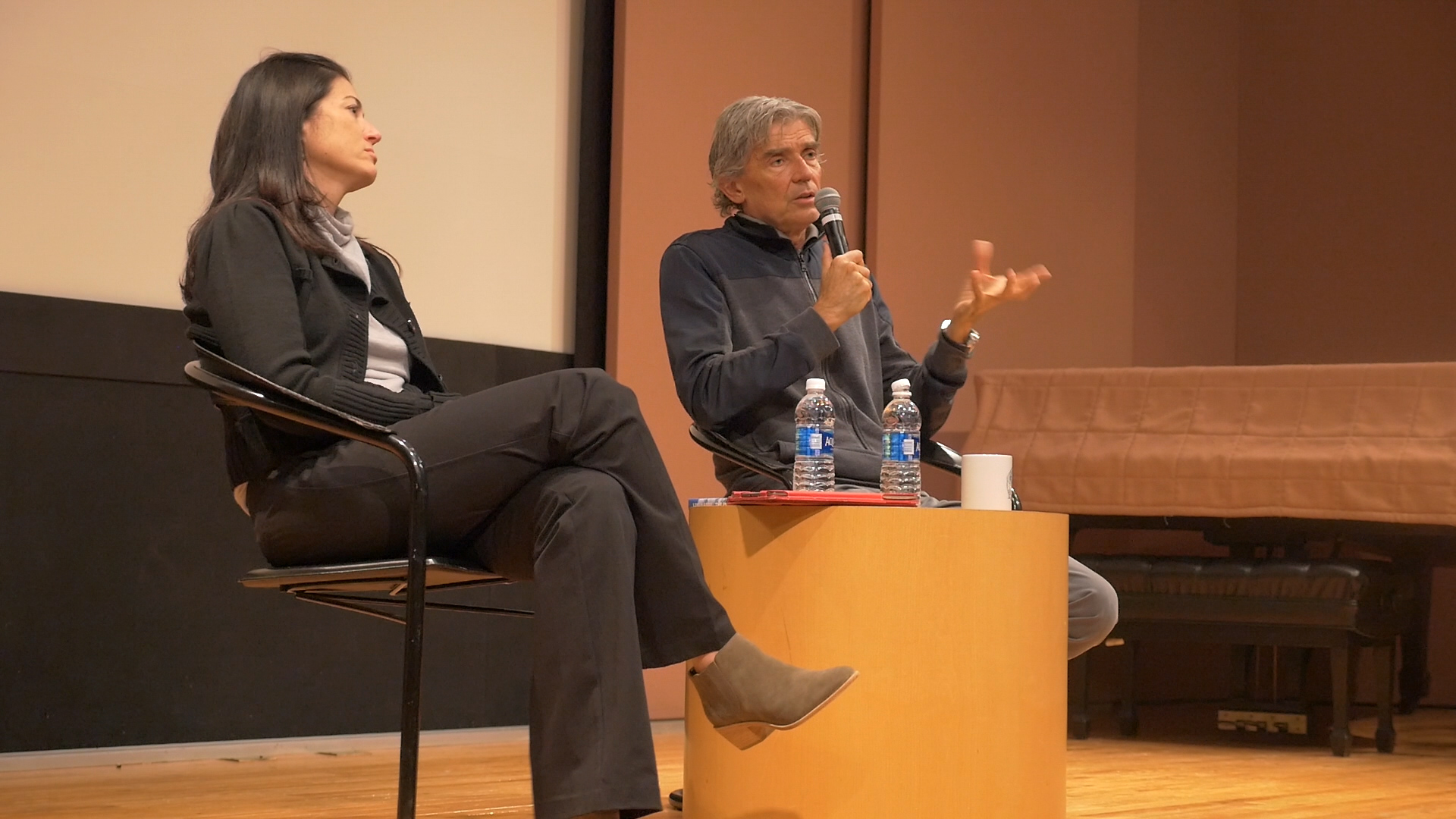
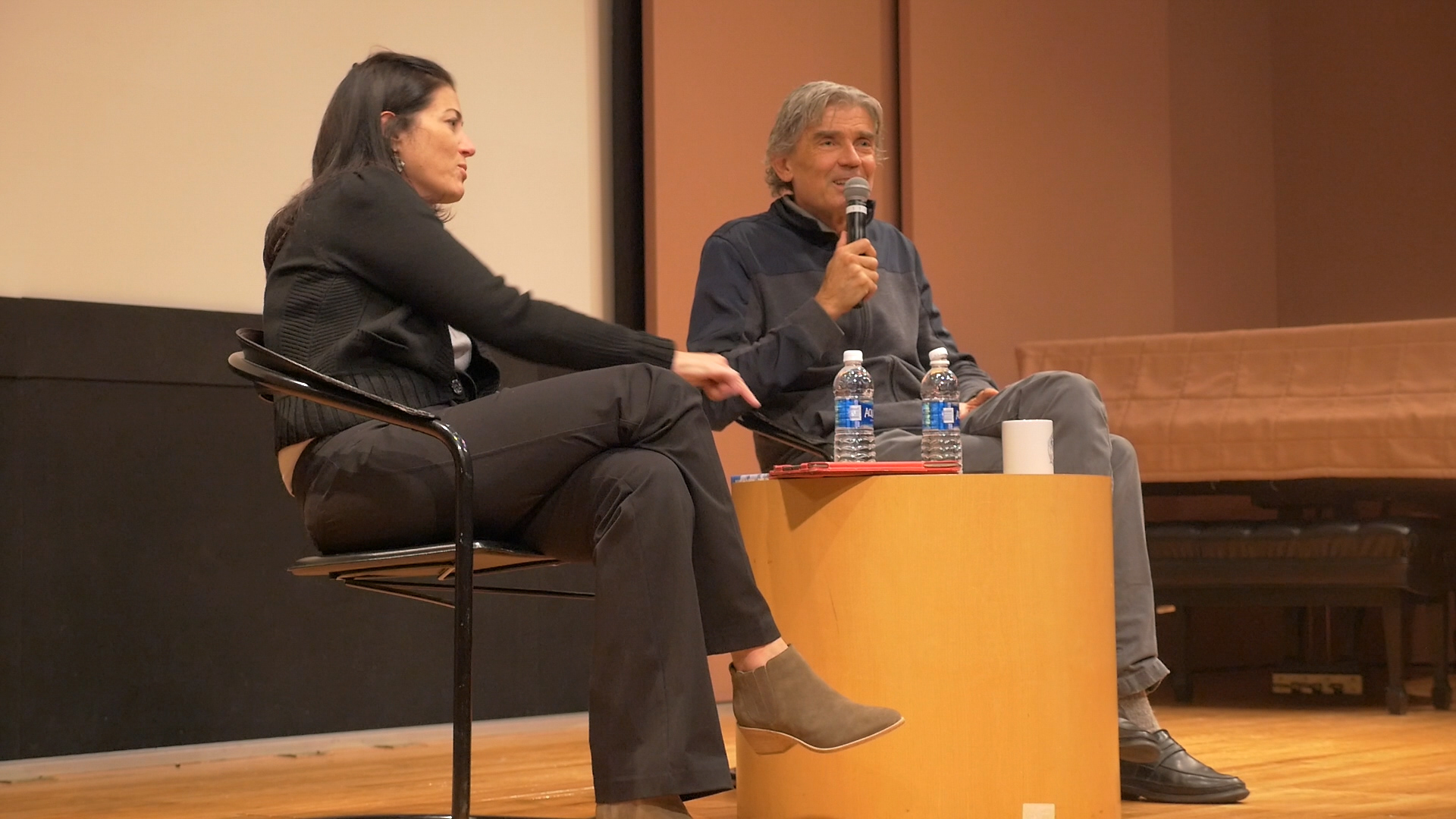
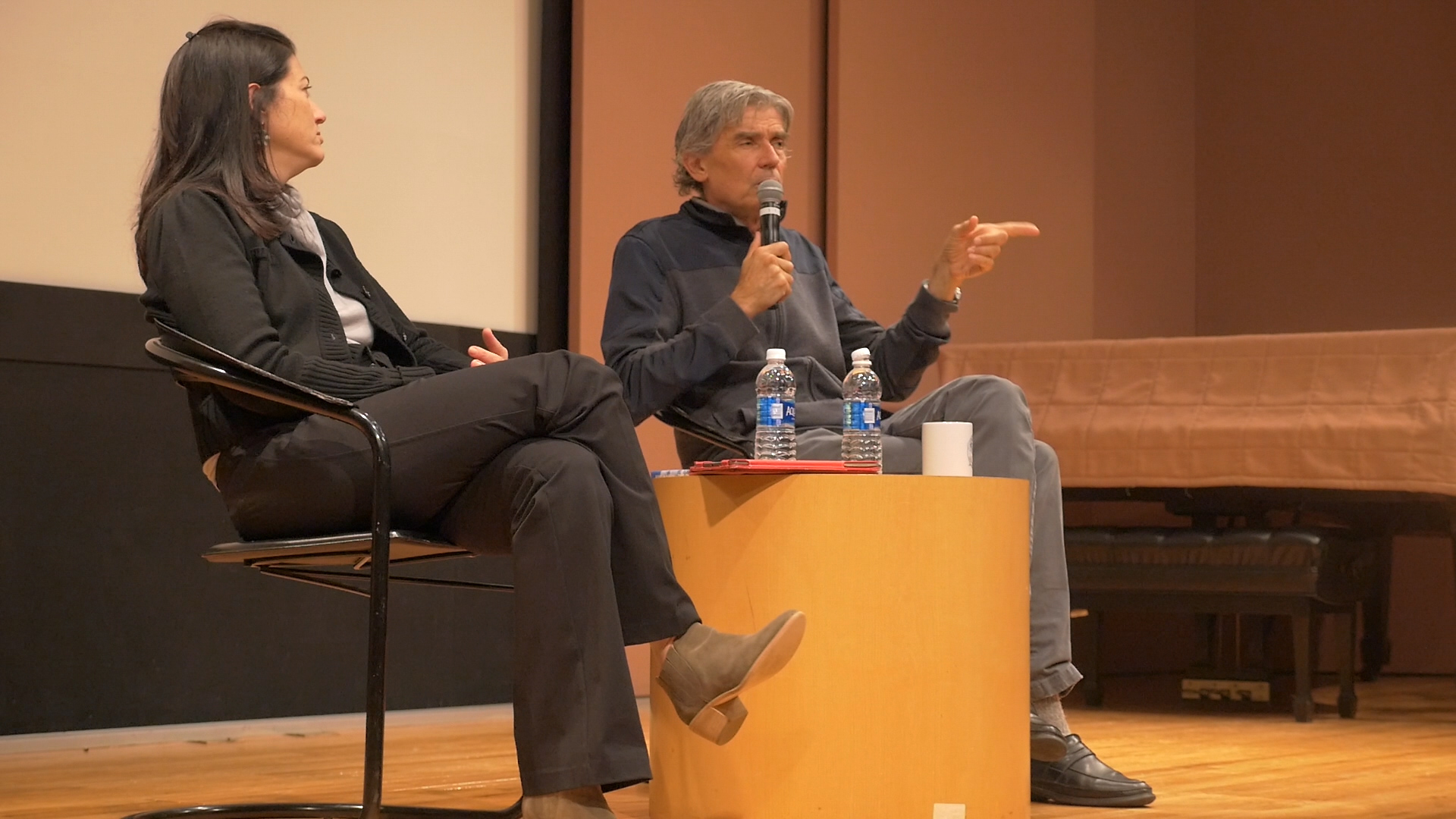
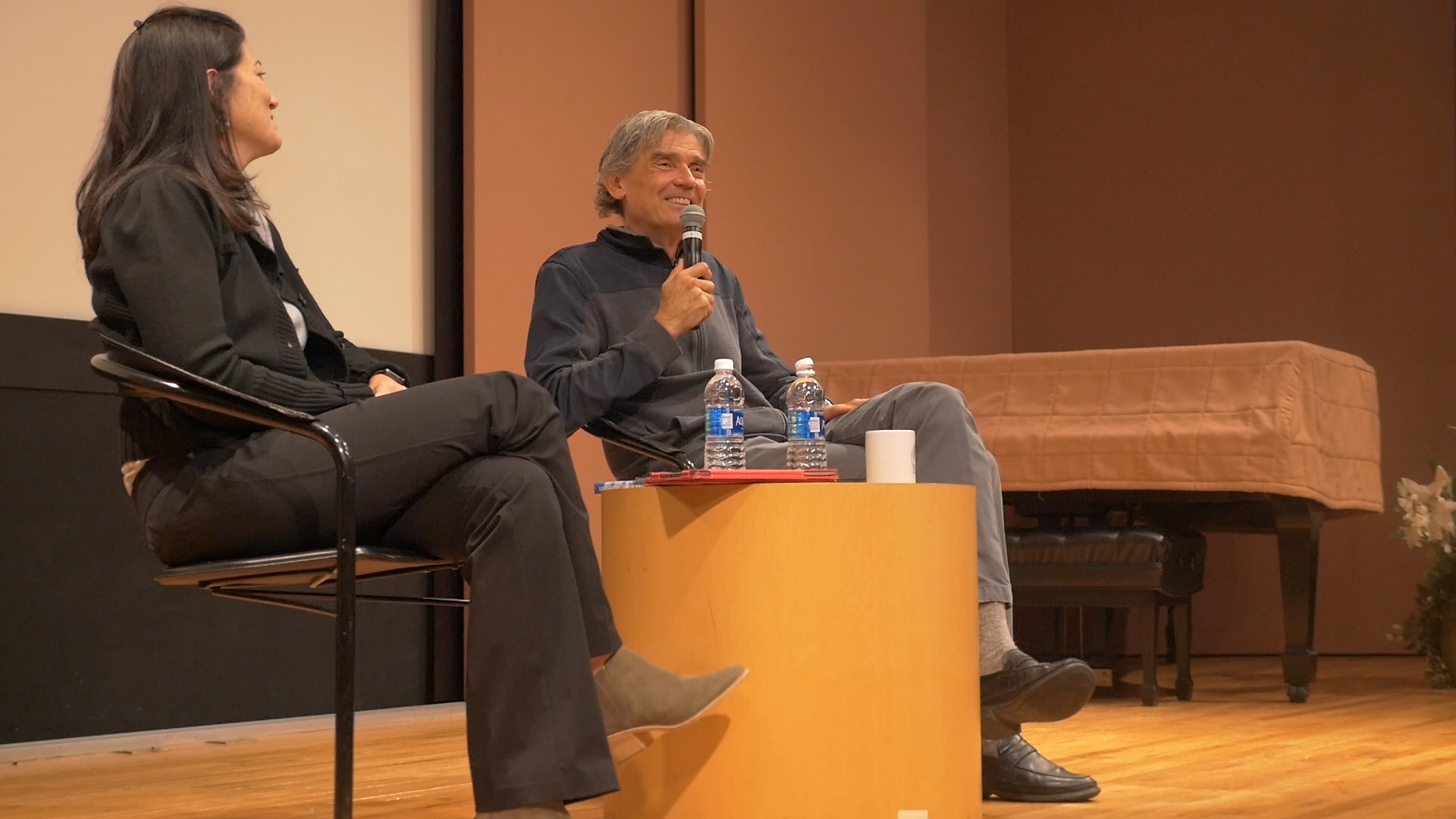
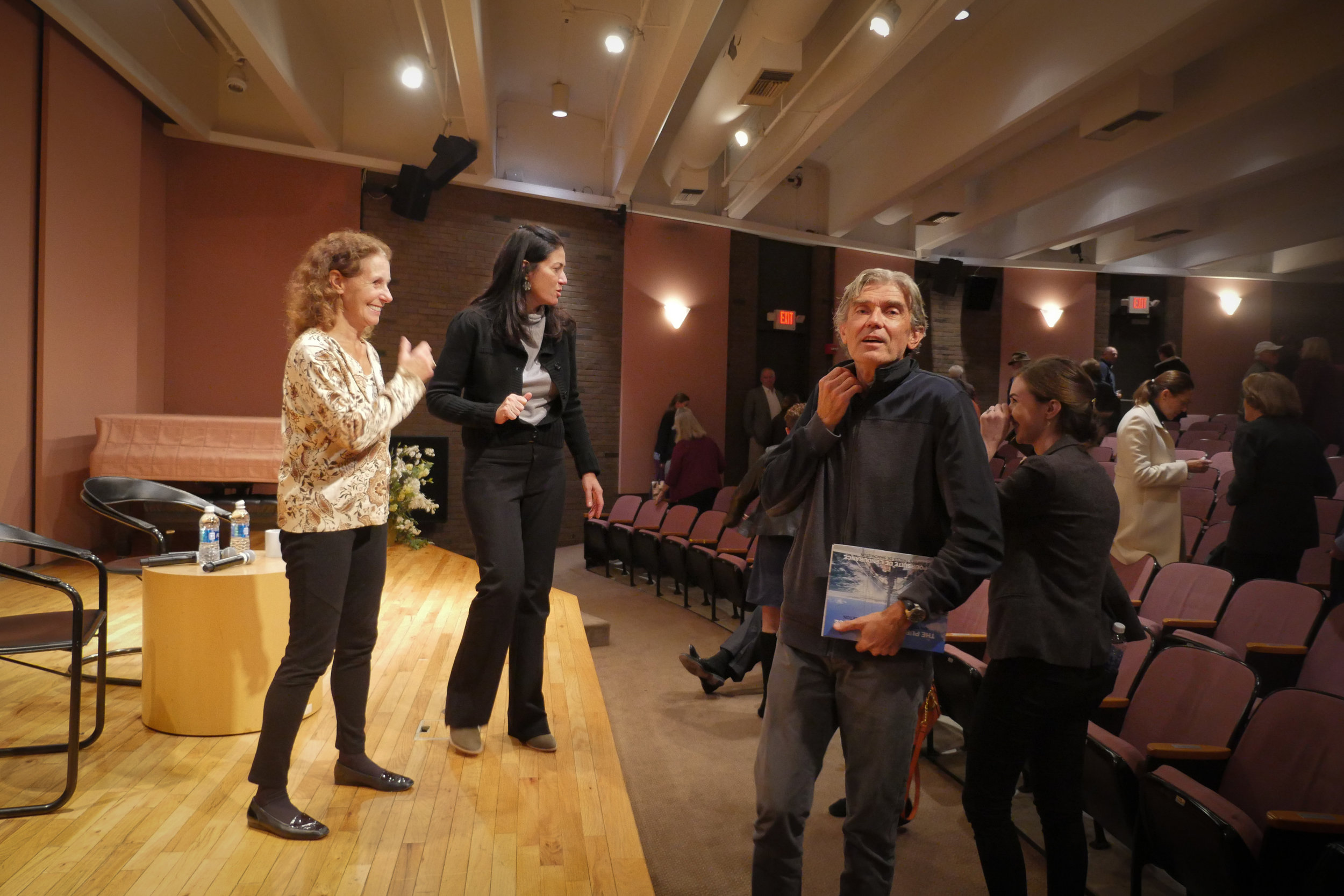
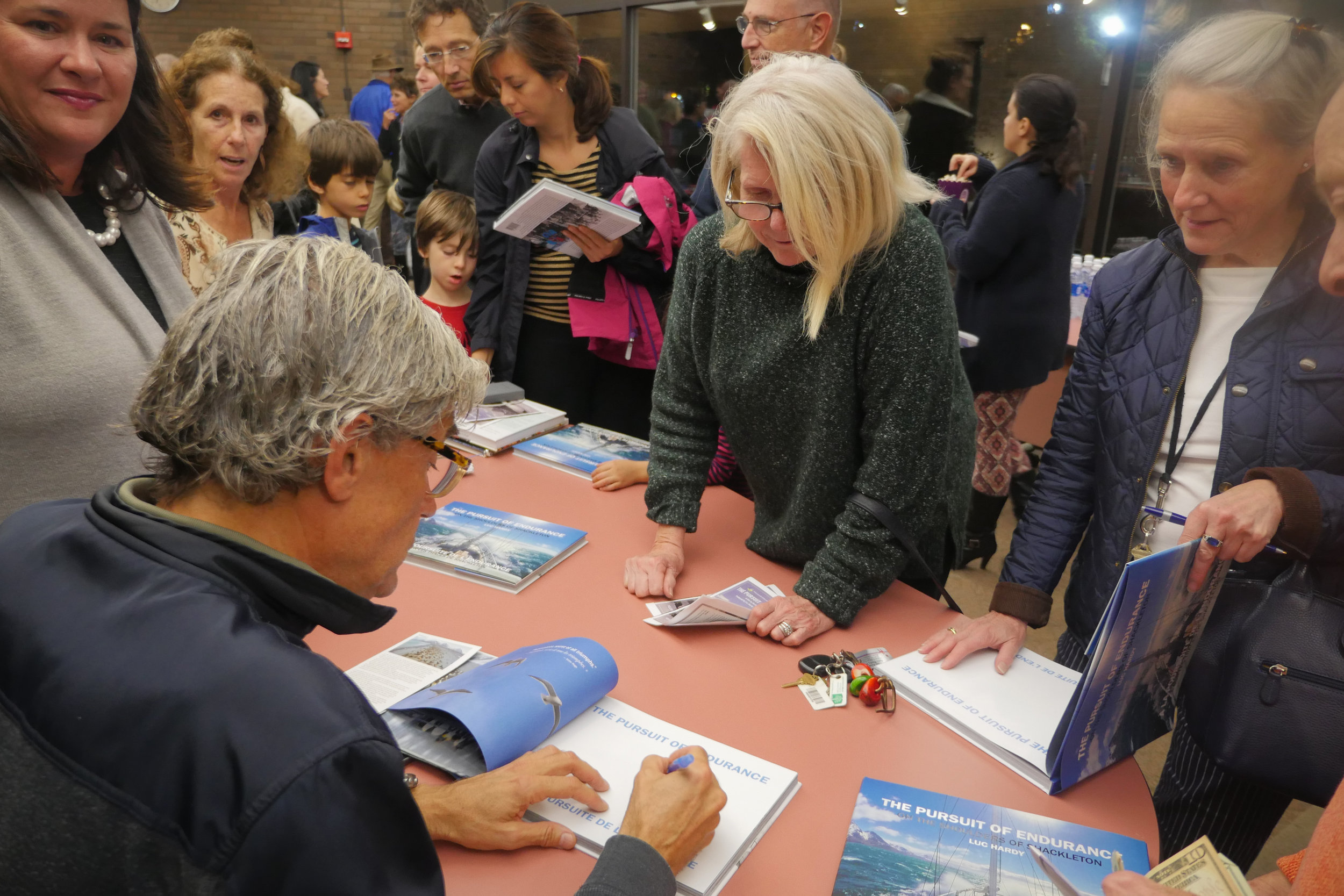
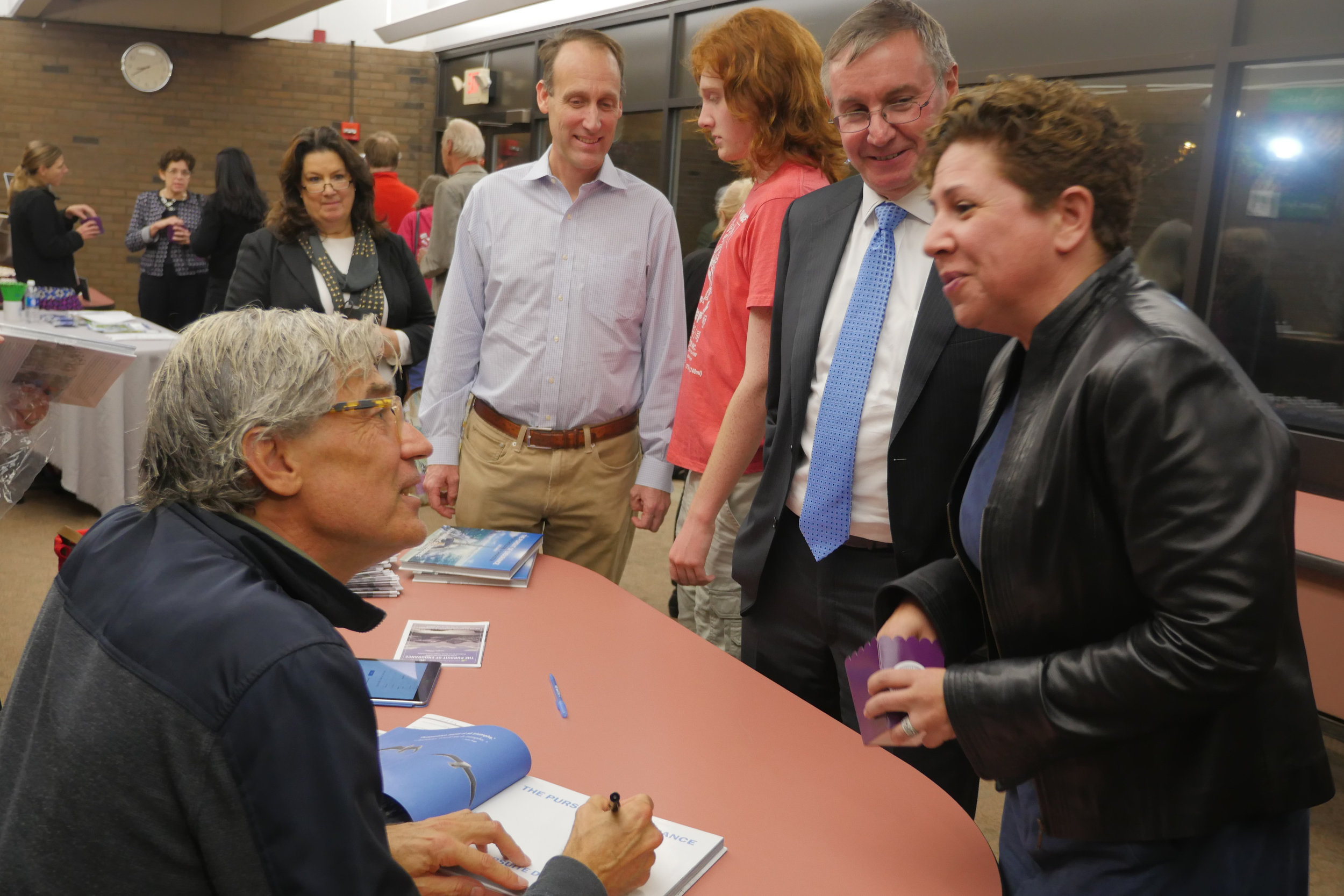
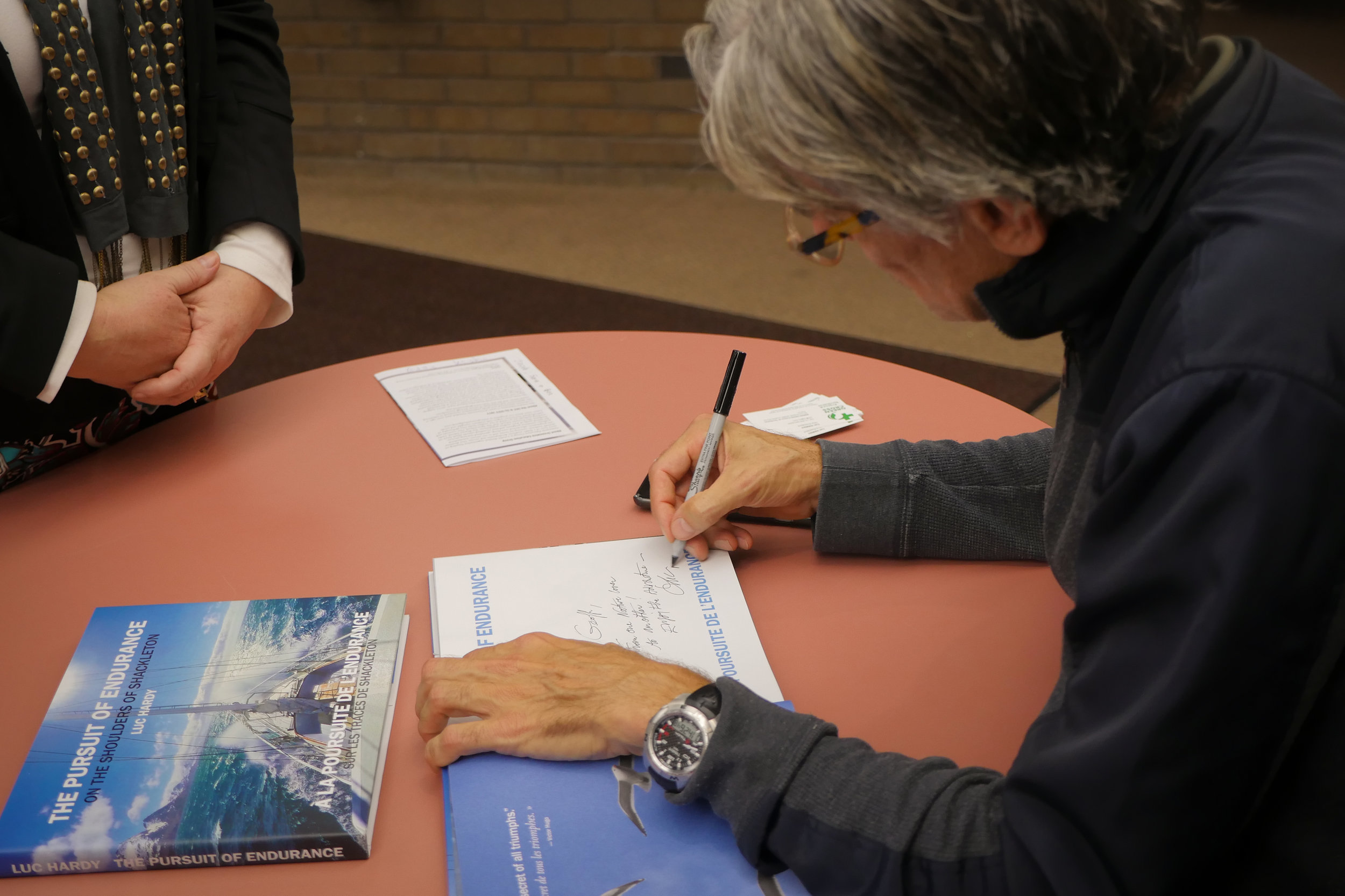

2017: STOP PLASTIC IN THE seas
A few news about Green Cross’ Climate: OCEAN Objective initiative:
The success of CoP21 is helping us in having efficient and results-oriented objectives to both prepare CoP22. The subject of Oceans has been introduced at the previous Conference, and will be carried further at CoP22.
This year could become the year of an agreement to plan the end of plastic waste in the seas.
As part of CoP22 Marrakech Events we will present:
“2017: Stop plastic in the seas” – Friday, Nov.11 from 11:00am to 12:30am – Green Zone Conference Room (TBD)
With the contribution of: Patrick Deixonne (7ème continent), Bruno Dumontet (Expédition MED), Luc Hardy (Sagax), Dominique Héron (ICC France), François-Michel Lambert (Institut de l’Economie circulaire), Anthony Lecren (Ministre de l’Ecologie de Nouvelle-Calédonie), Houria Tazi Sadeq (Coalition Marocaine pour l’eau) and Bouchta El Moumni (Université Abdelmalek Essaadi).
The discussion will be followed by a:
Screening “The Pursuit of Endurance – On the shoulders of Shackleton” – from 1:30pm to 4:00pm
In presence of Luc Hardy, co-producer of the film.
Learn more about Climate: Ocean Objectives.
Article by robert bunes, September 15th 2016
Two Antarctic enthusiasts met after the screening "The Pursuit of Endurance: On the Shoulders of Shackleton" at the French-American Chamber of Commerce, September 13th 2016.
Q&A after the screening of "The Pursuit of Endurance" at FIAF
"Secrets of the World’s Super-Explorers" By Angela Almeida and John Surico May 27, 2015
It’s been a busy weekend for Don Walsh. Yesterday he attended a lunch, followed by a high tea. Then he moderated a panel on polar travels aboard the U.S.S. Intrepid, the warship docked on the Hudson River. A subsequent cocktail reception lasted long into the night. On this snowy morning in March, there is an early talk at the United Nations... Read More
Contribute to the film ODYSSEA 3D: Save Oceans with Jean-Michel Cousteau
Did you know that every other breath you take is a gift from the sea? Yes, that’s right. Phytoplankton in the ocean, through photosynthesis, produce more than half the oxygen on Earth! That is one of the reasons we all depend on the health of the ocean for our survival.
We are accustomed to seeing the large animals such as whales, dolphins and sharks, and many of us have focused on protecting them. However, they represent only the top of the food chain while everything in the ocean and on our planet depends on the bottom of the food chain.
ODYSSEA 3D focuses on this crucial part of the food chain: From plankton to tiny animals that feed on plankton and which are in turn source of food for species in the entire food chain. Protecting the ocean means not just protecting the large animals but also those that are small and fragile.
We need you to become part of our team not only by financially contributing to our campaign but also by spreading the word to your friends, relatives, co-workers, and colleagues. Together we can complete the movie and also start to market it around the world. The more of us get involved, the easier it will be to find distributors in countries all over the world. And all together we will take part in raising awareness for millions of people to protect the ocean.
We have a very limited timeframe as we want to be ready by May 2016, not only to market the film to worldwide distributors at the Cannes Film Festival, but also to take advantage of an amazing marketing opportunity. Indeed, May 2016 is the 60th anniversary of the Golden Palm Award Jacques Cousteau won in 1956 for THE SILENT WORLD, and Jean-Michel Cousteau would be then able to present ODYSSEA 3D in Cannes as a tribute to his father.
screening of "The Pursuit of Endurance" at “Maison Française” the Embassy of France in Washington, D.C.
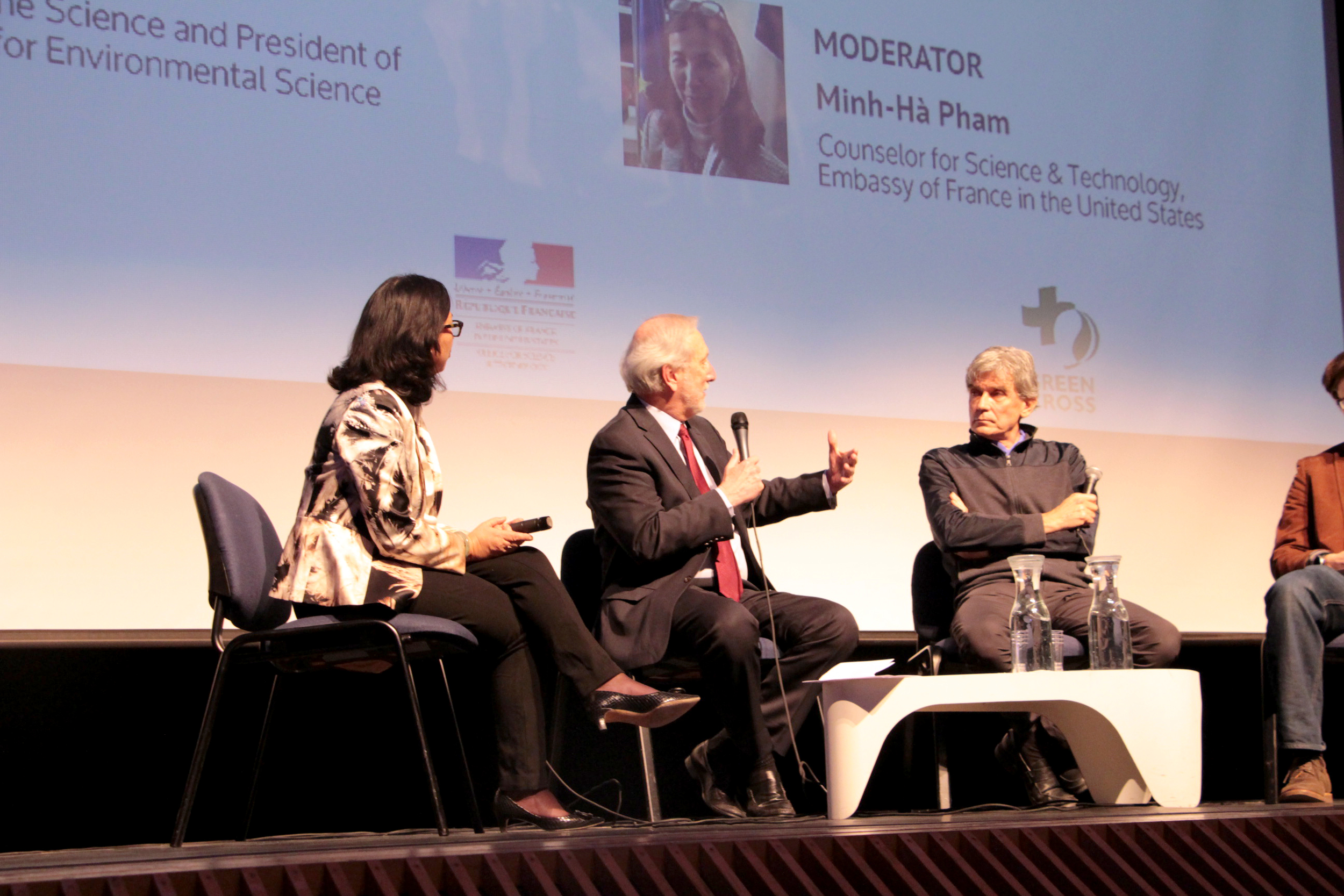
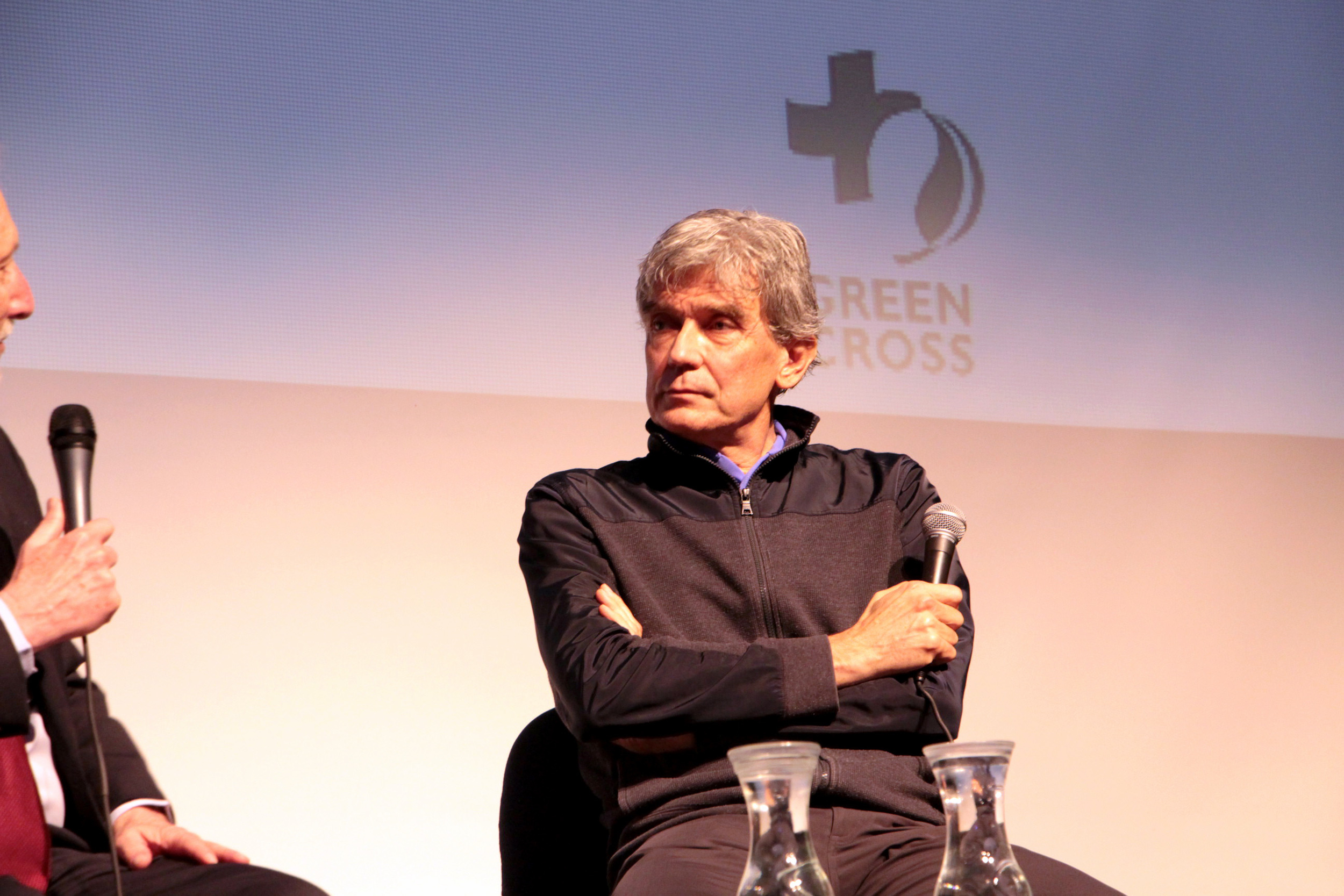
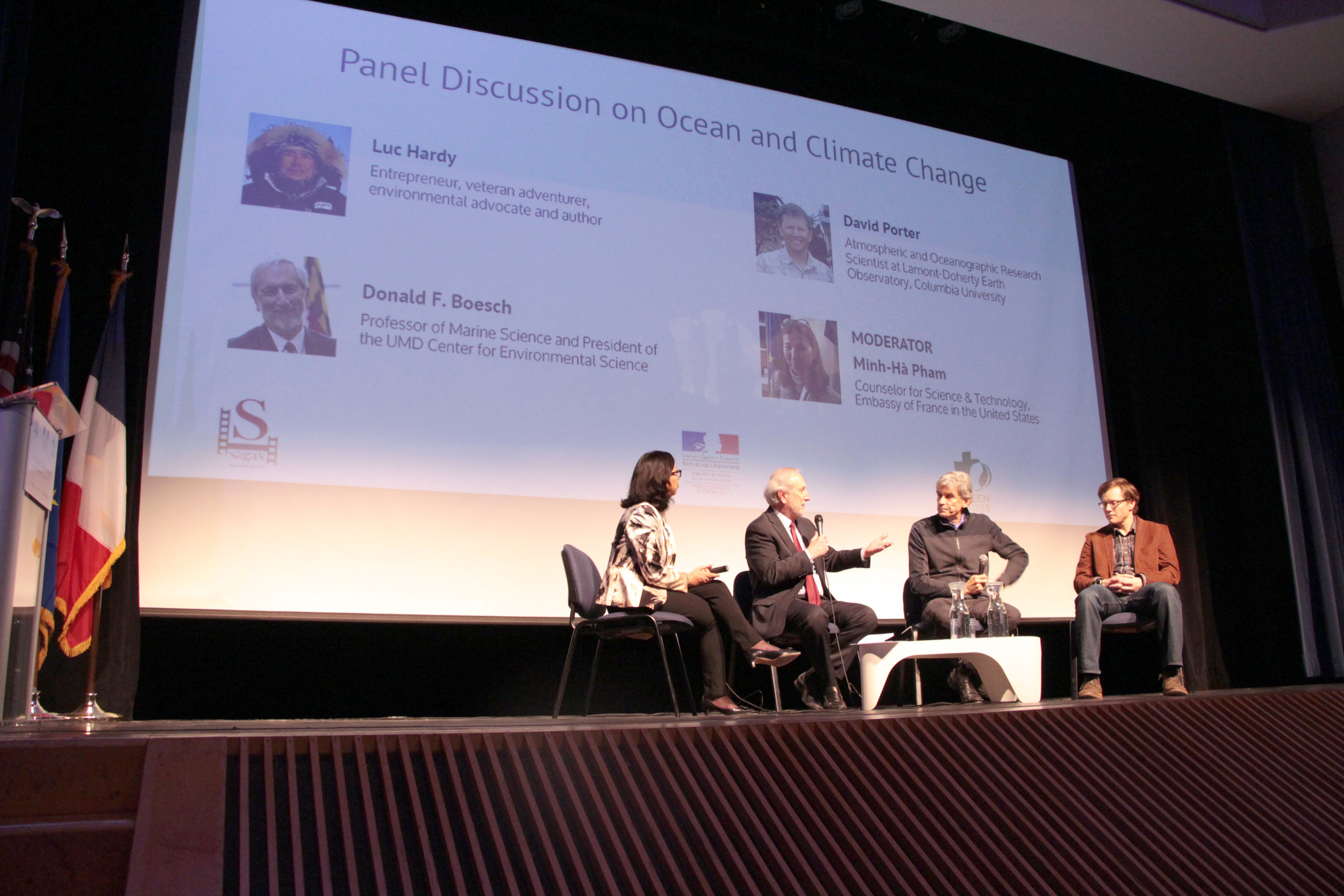
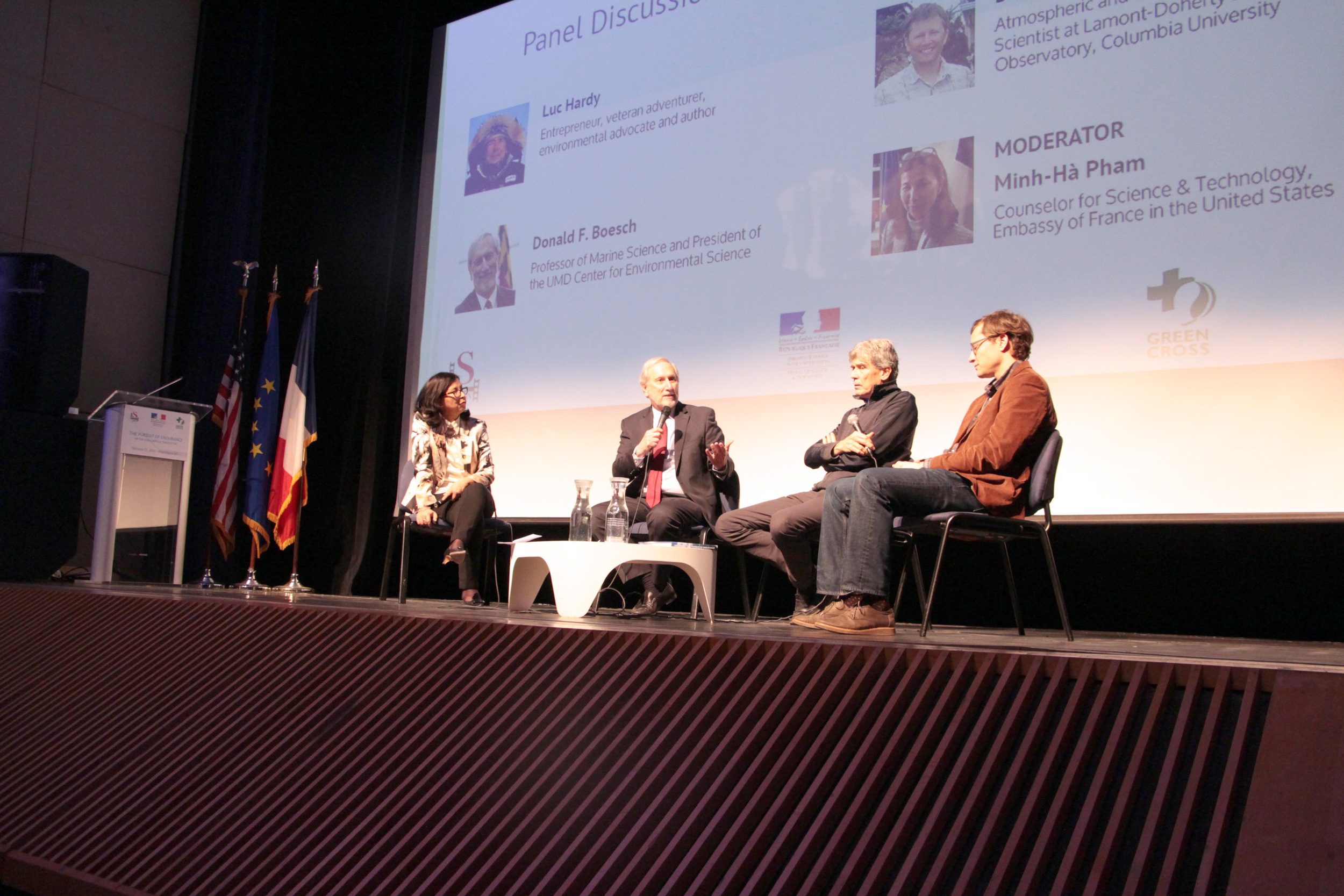
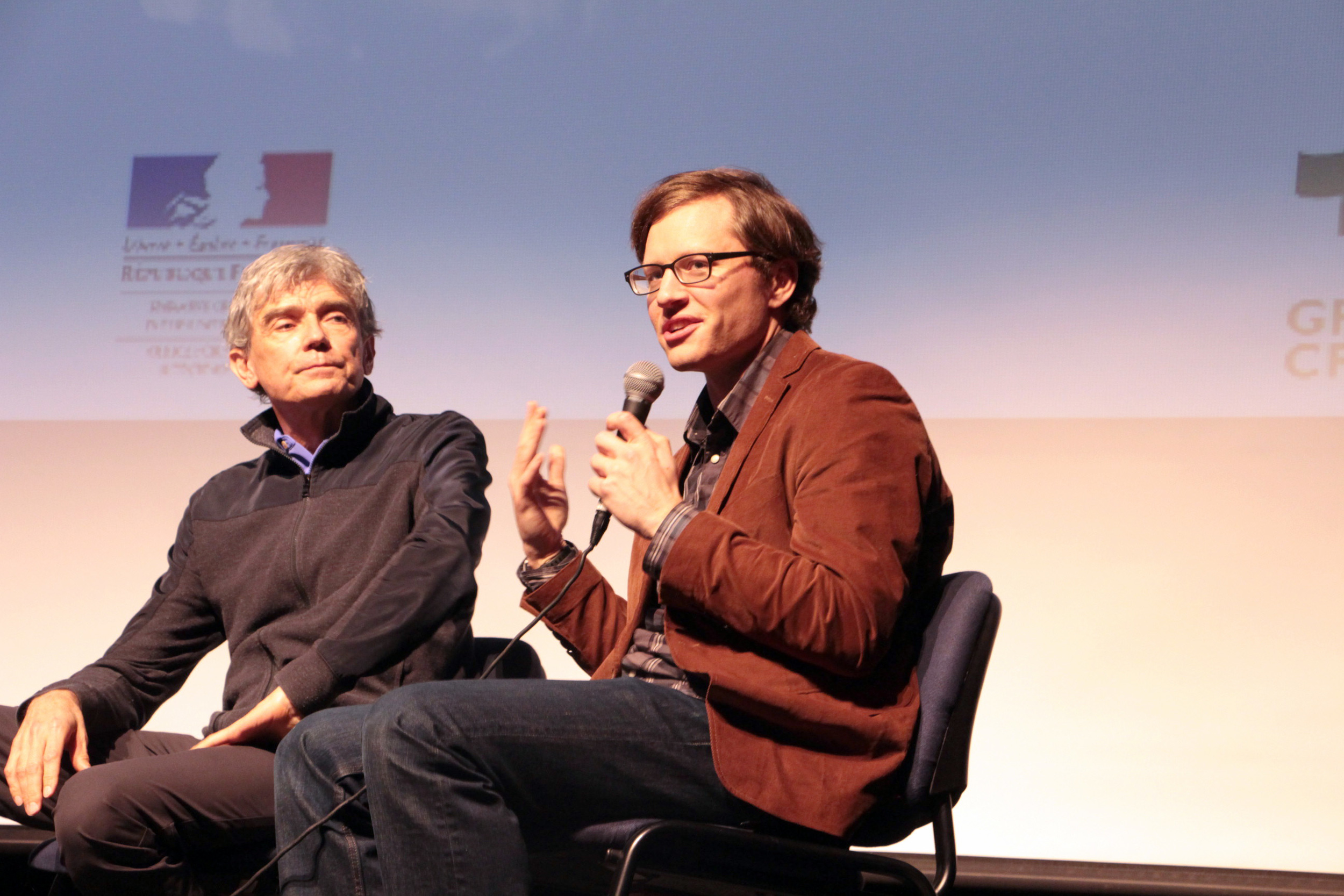
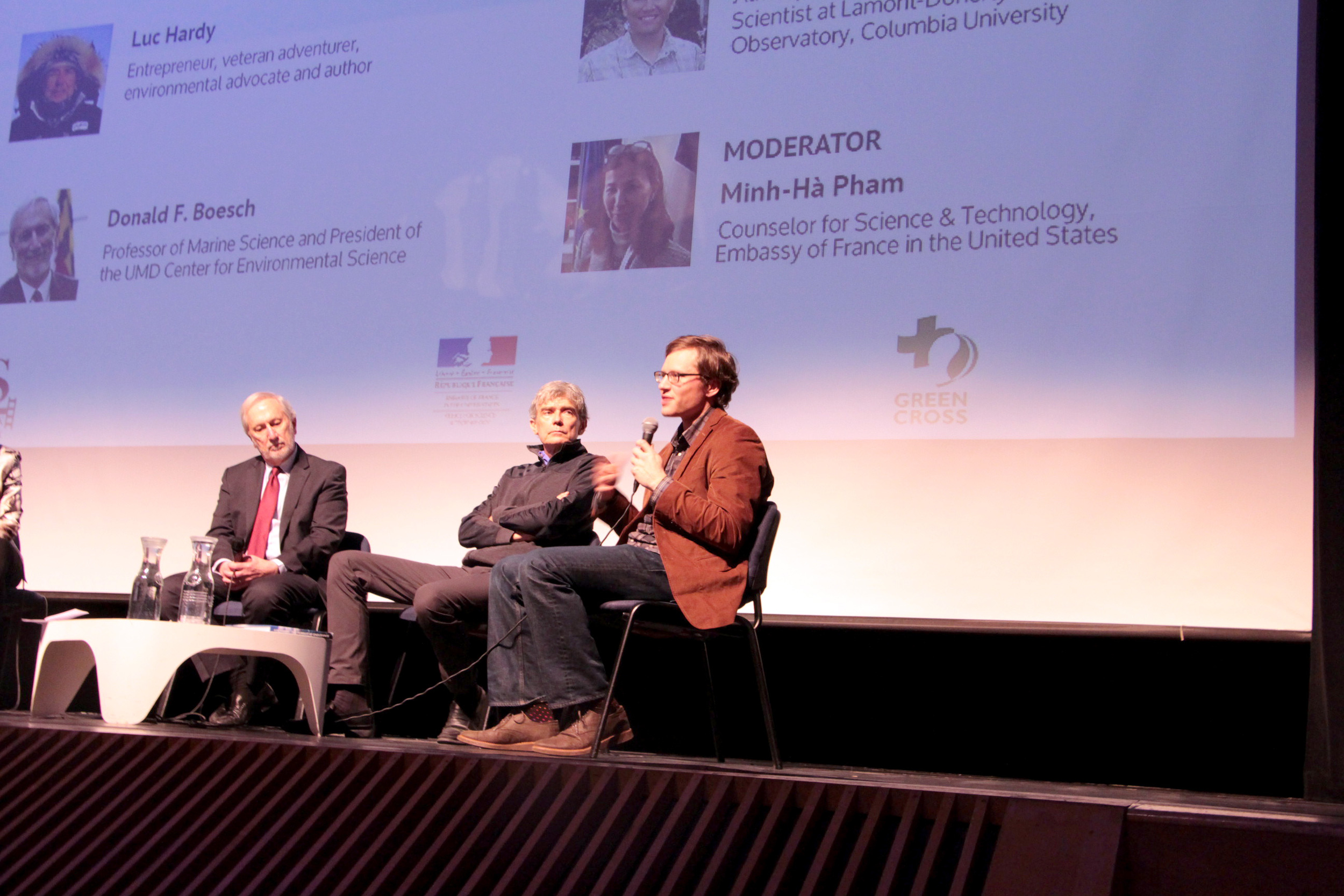
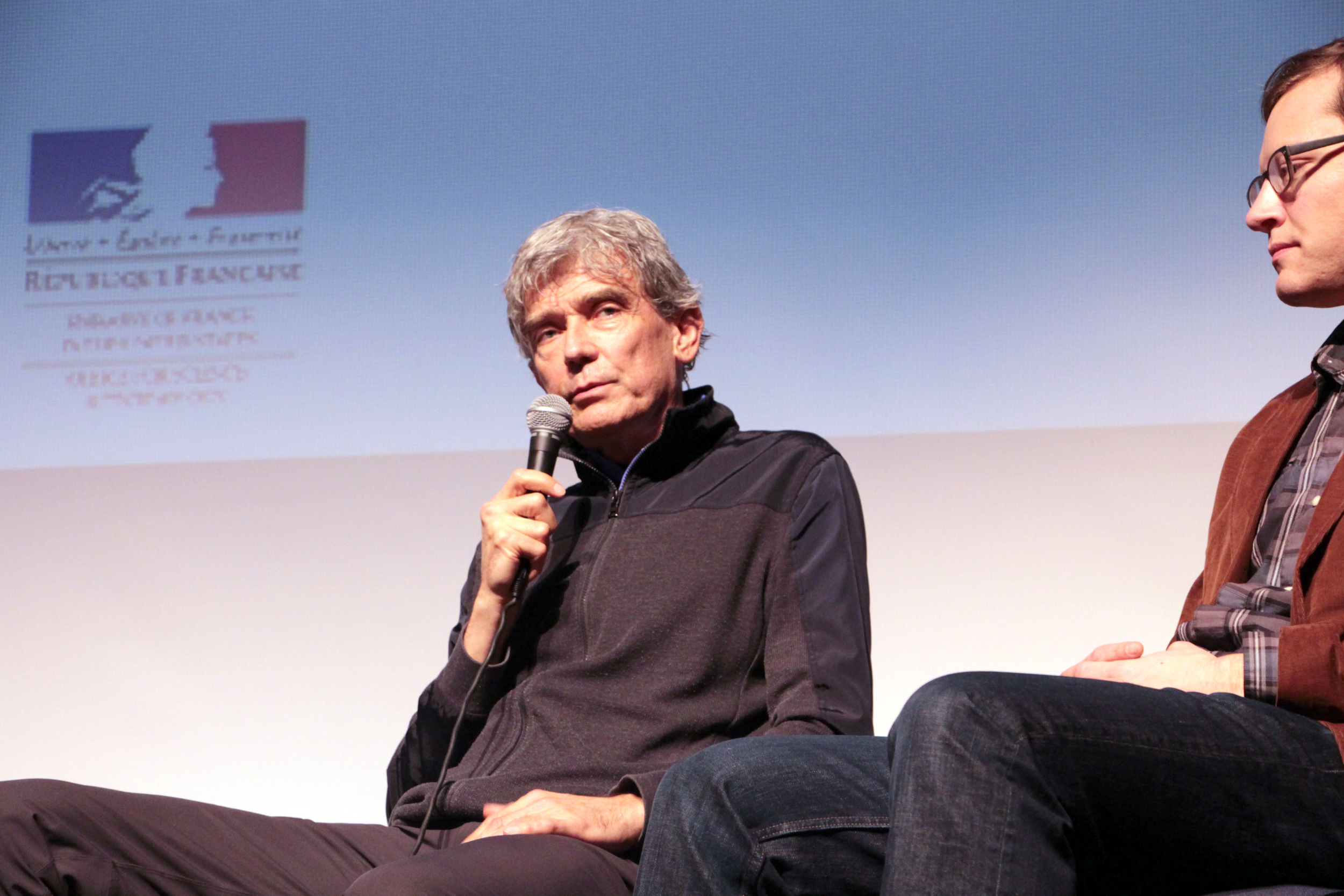
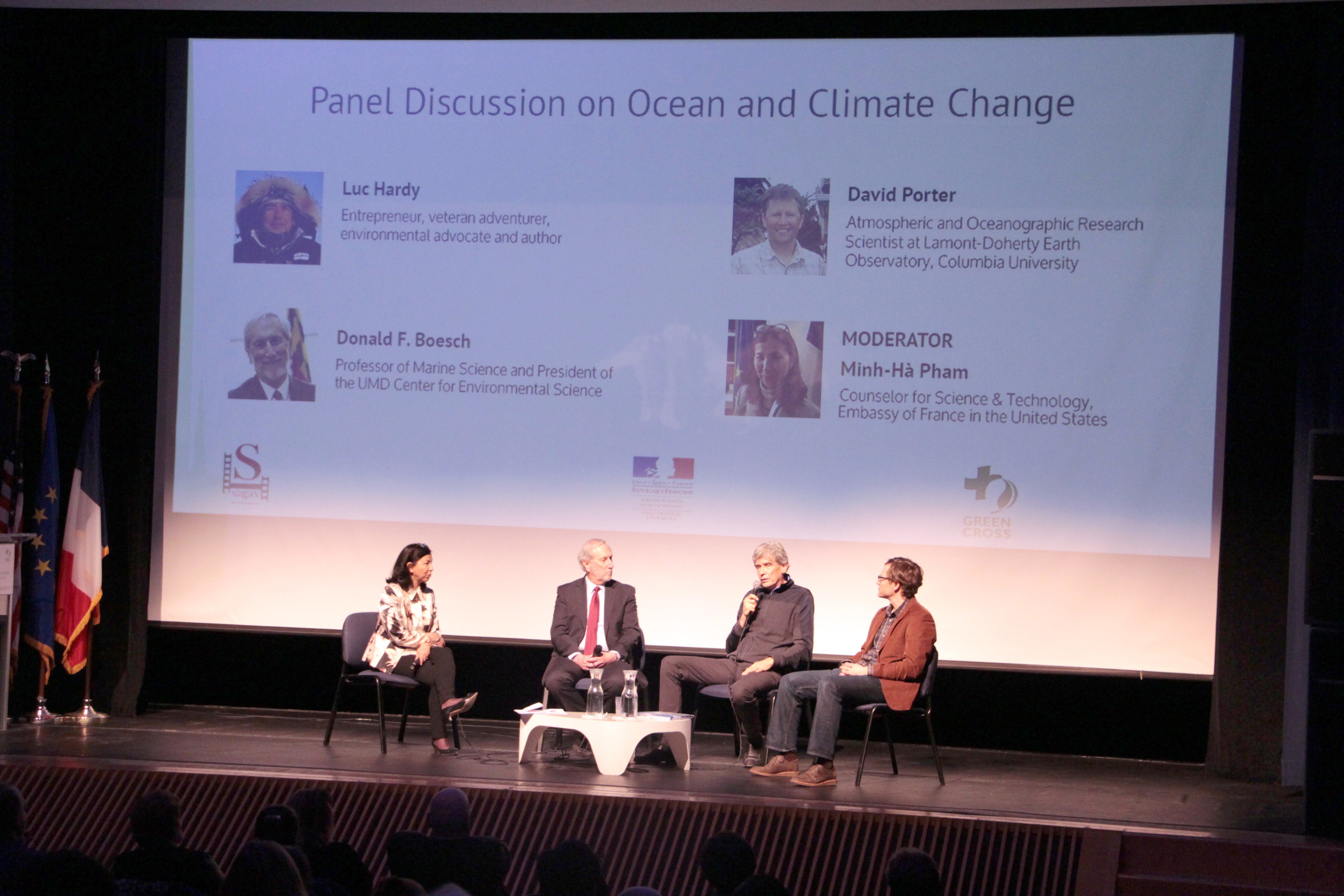

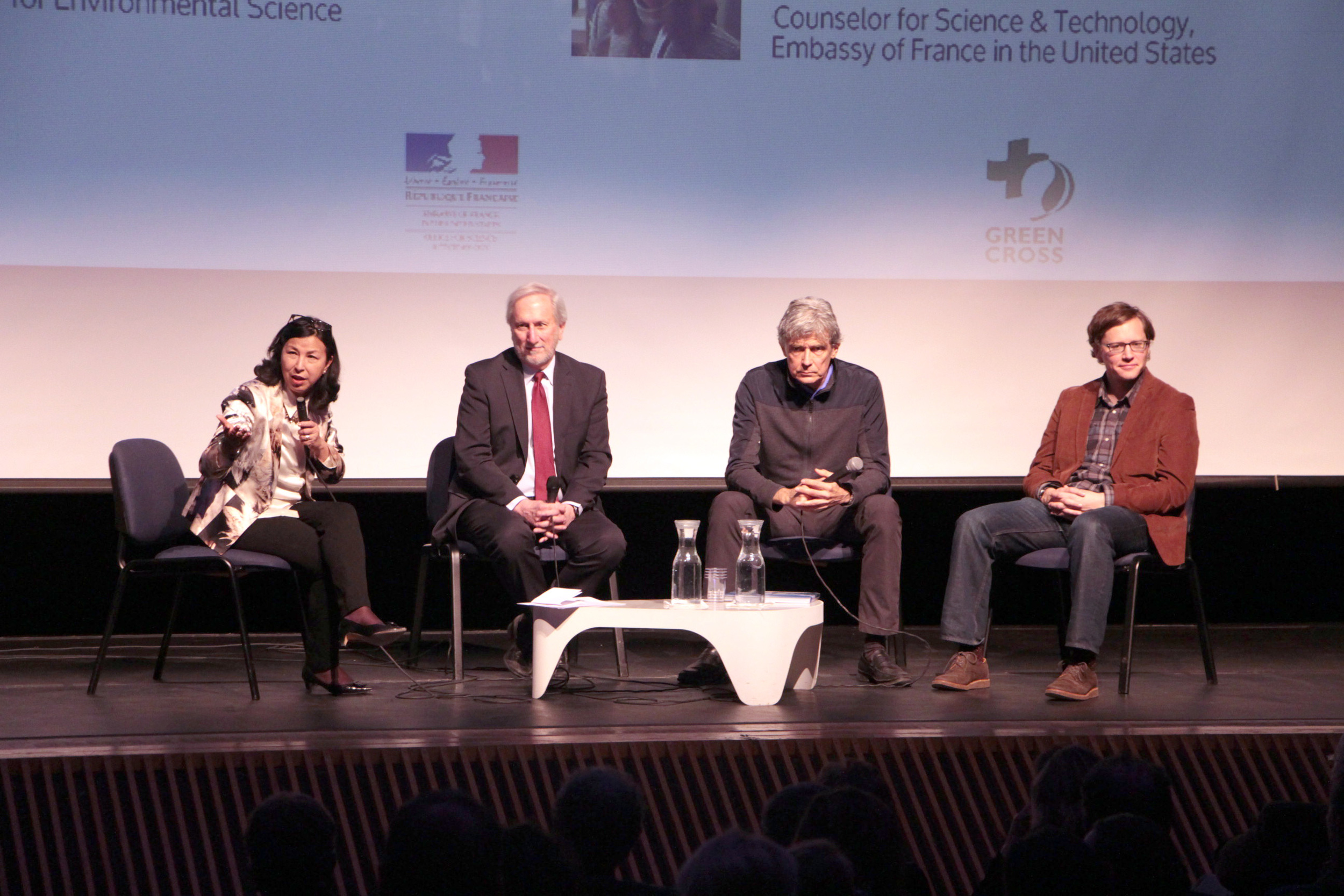
debate following the film screening of "The Pursuit of Endurance - On the Shoulders of Shackleton" aT Ciné Lumière In London





Screening of "The pursuit of Endurance" at Cop 21, Grand palais in Paris
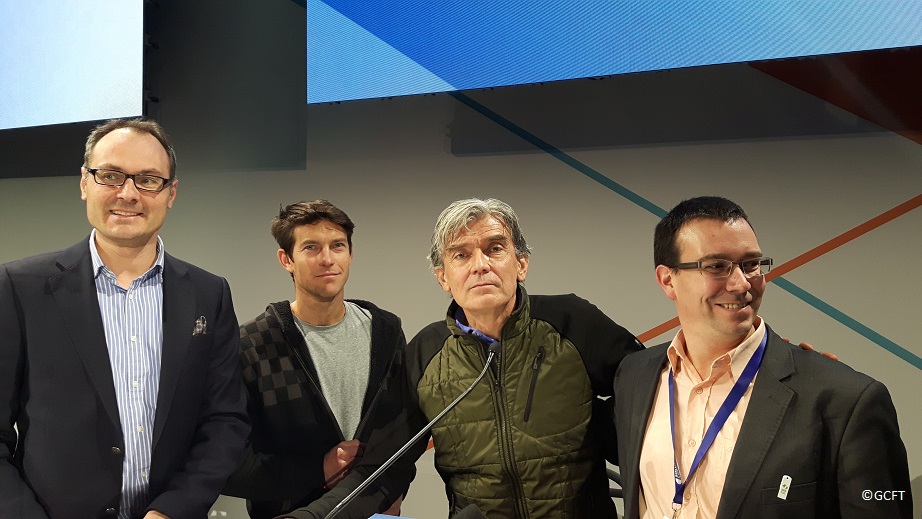
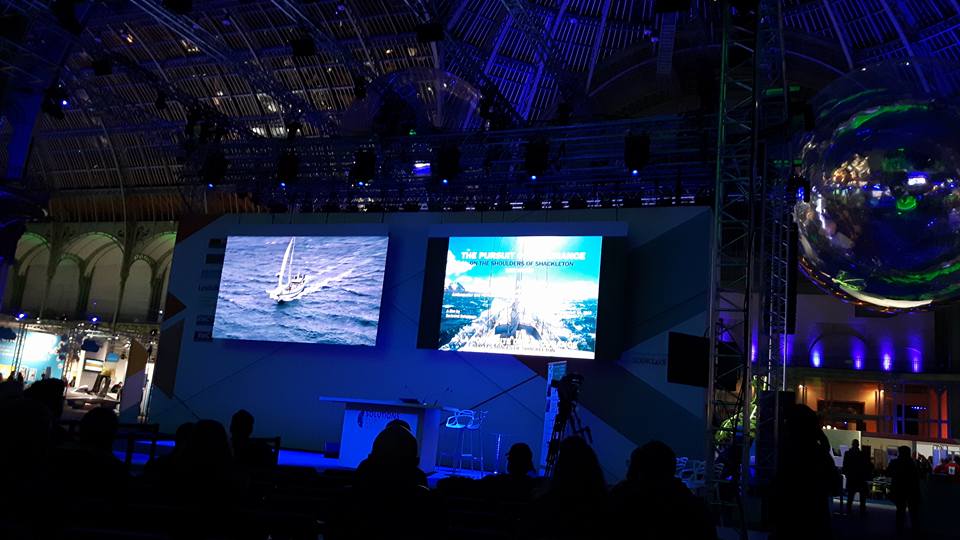


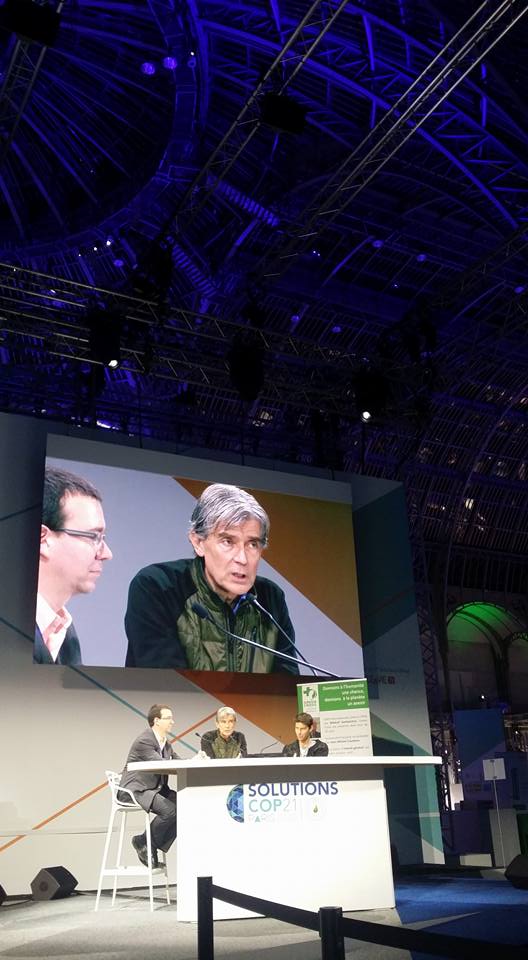

FILM INTRODUCTION with Luc Hardy and Nicolas Imbert
DEBATE and Q&A POST-FILM: With Luc Hardy, Nicolas Imbert and Bertrand Delapierre at COP 21
Interview of Luc Hardy about "The Pursuit Of Endurance" by Sopra Steria
Screening of "The pursuit of Endurance" at United Nations in New York. Here is the video showing introductory remarks as well as the full Q&A.
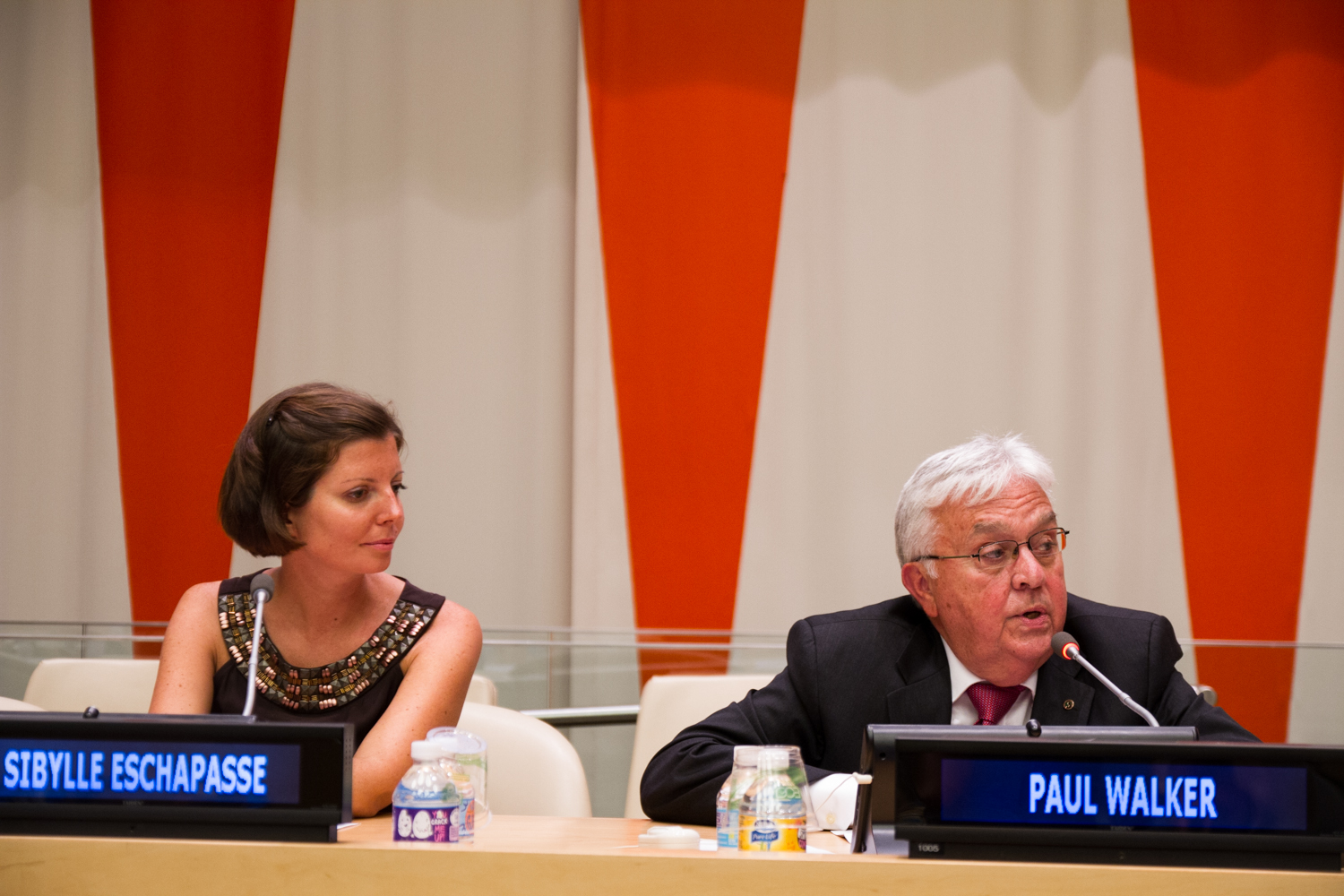


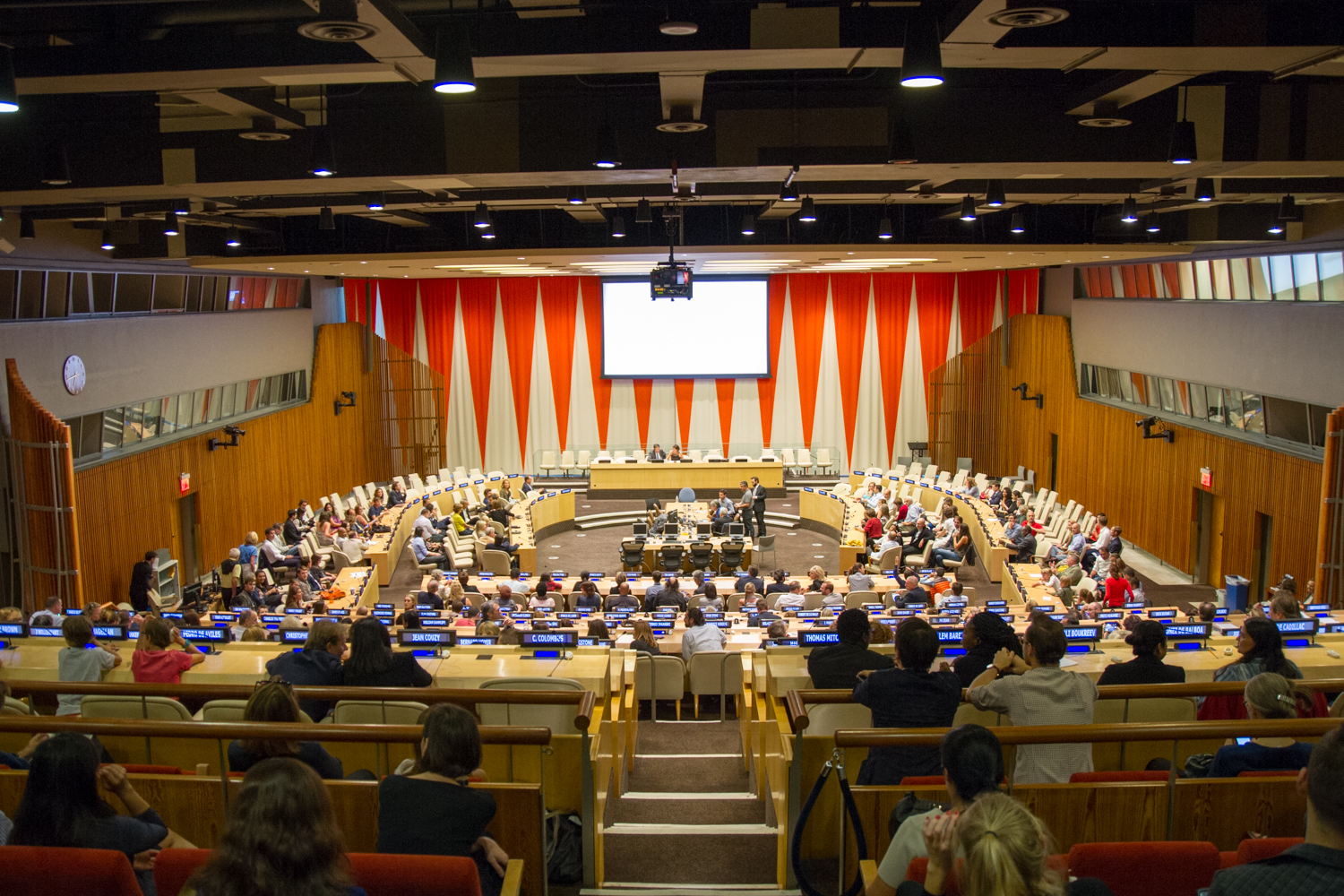

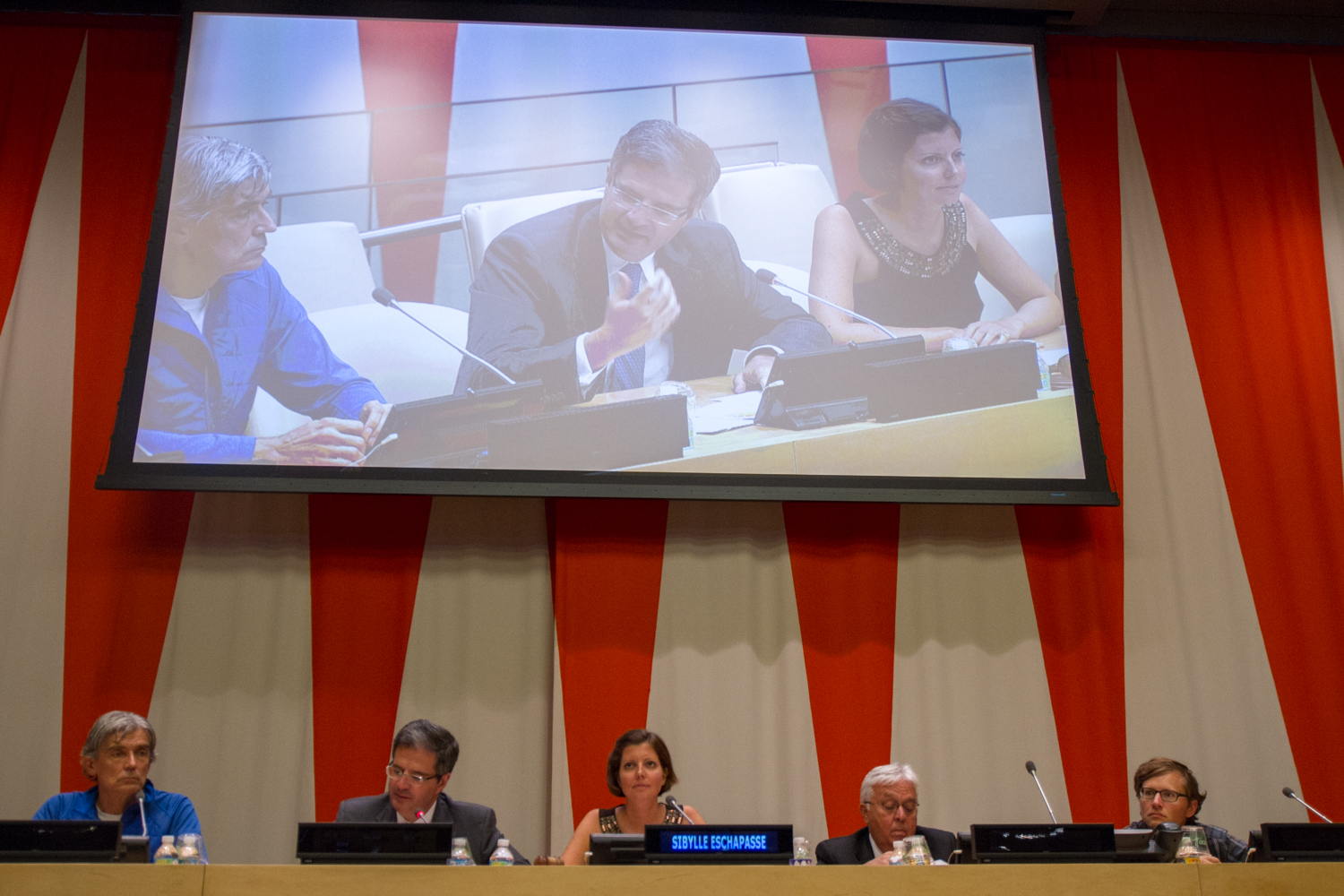
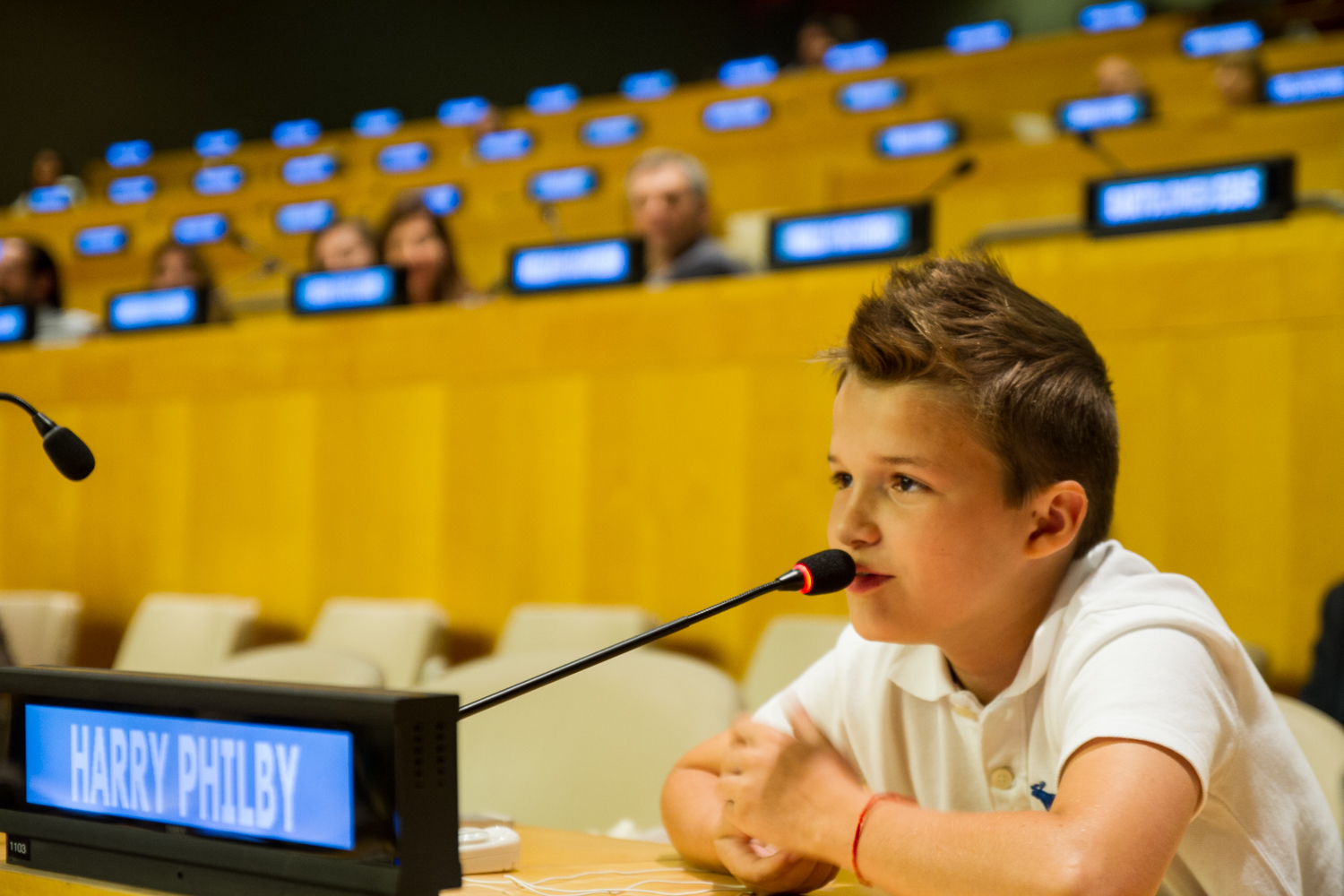
WGCH Luc Hardy and Renee Ketcham interview – The Pursuit of Endurance at the AVON Theater, Stamford, Sept 10.
“Vivamus pellentesque vitae neque at vestibulum. Donec efficitur mollis dui vel pharetra.”






![CP_Hampton Sides[1].jpg](https://images.squarespace-cdn.com/content/v1/5601b988e4b02ead4f1388e8/1537200218890-B3QWCQ9GRR1XSLWDLH73/CP_Hampton+Sides%5B1%5D.jpg)
